Polynucleotide Construct For Improving Agricultural Characteristics In Crop Plants
BOTTO; Javier Francisco ; et al.
U.S. patent application number 16/818226 was filed with the patent office on 2020-09-24 for polynucleotide construct for improving agricultural characteristics in crop plants. The applicant listed for this patent is CONSEJO NACIONAL DE INVESTIGACIONES CIENT FICAS Y TECNICAS (CONICET), UNIVERSIDAD DE BUENOS AIRES. Invention is credited to Javier Francisco BOTTO, Carlos Daniel CROCCO.
| Application Number | 20200299711 16/818226 |
| Document ID | / |
| Family ID | 1000004766333 |
| Filed Date | 2020-09-24 |
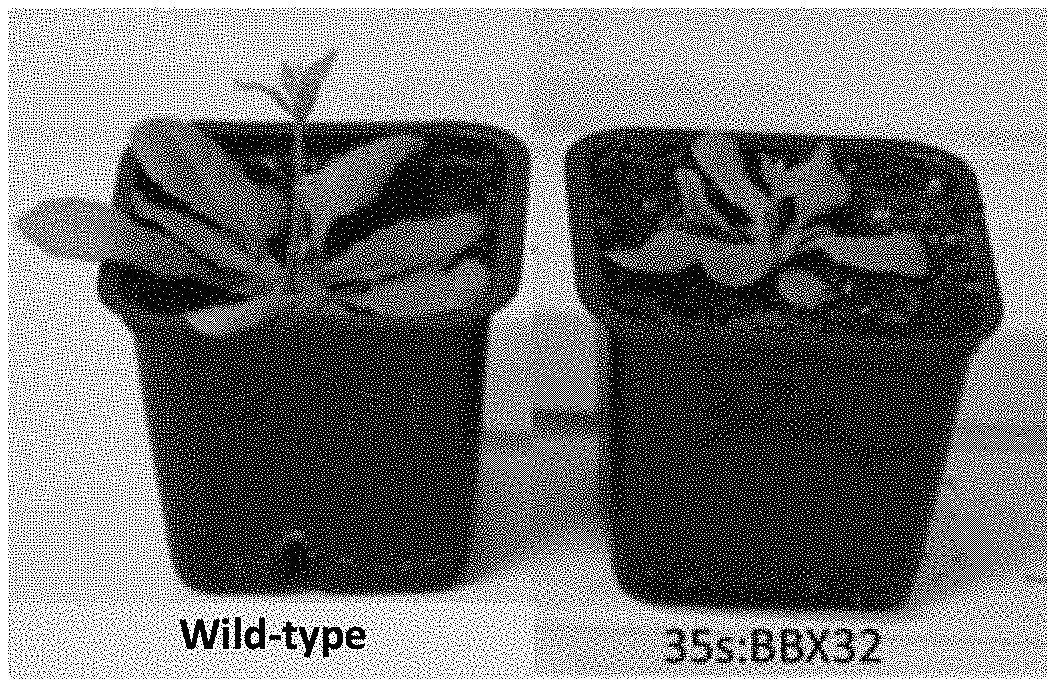
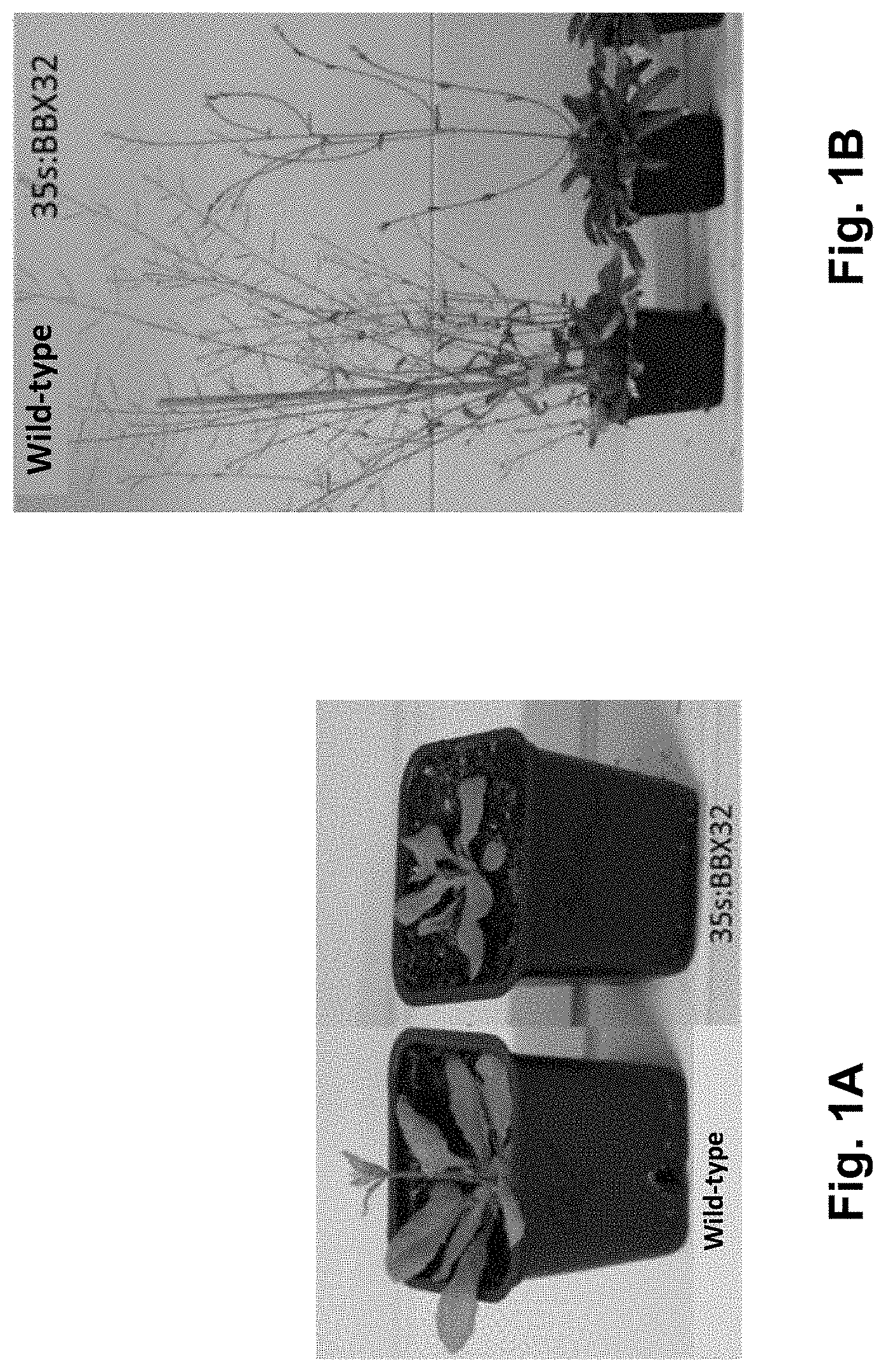
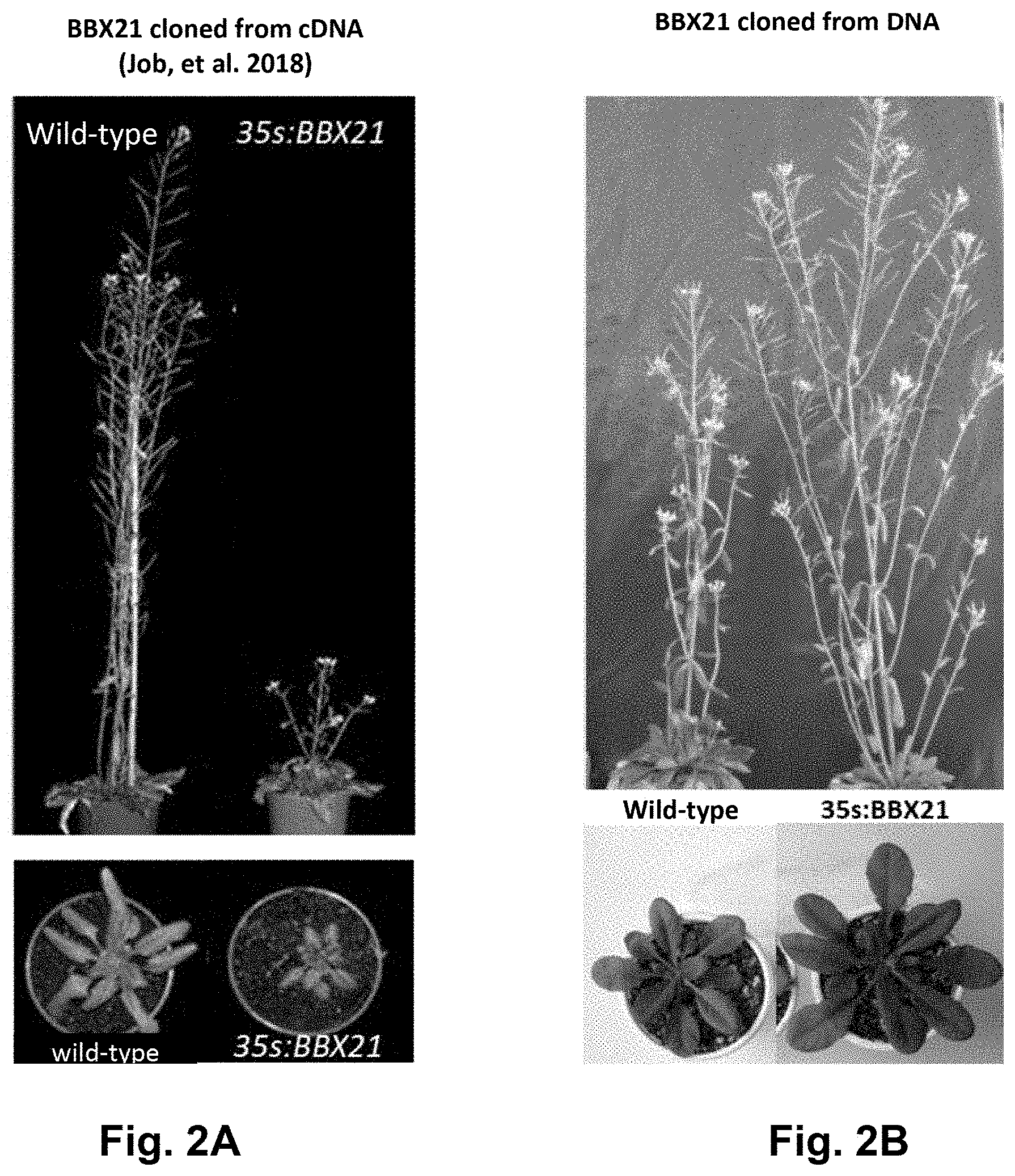
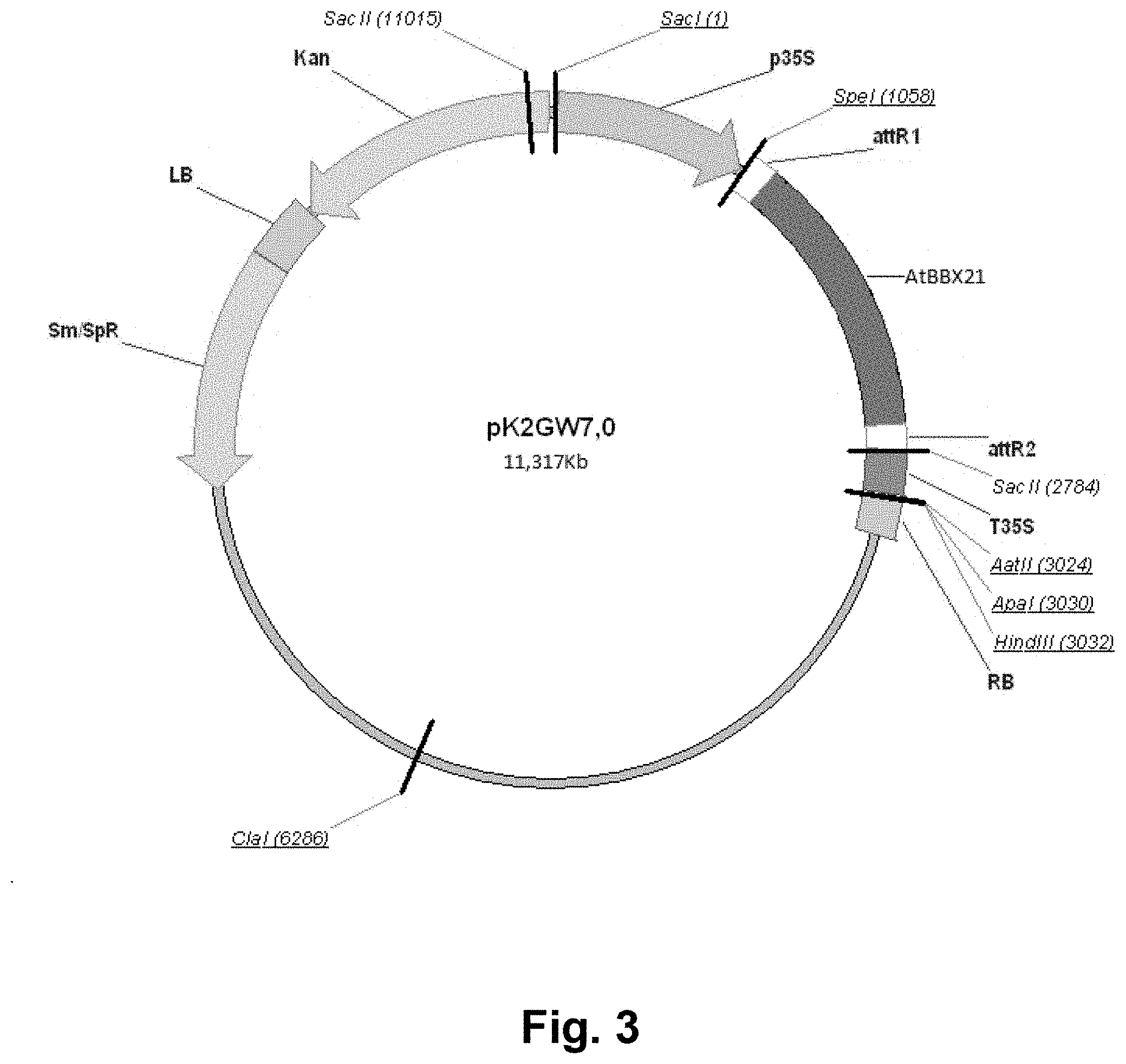
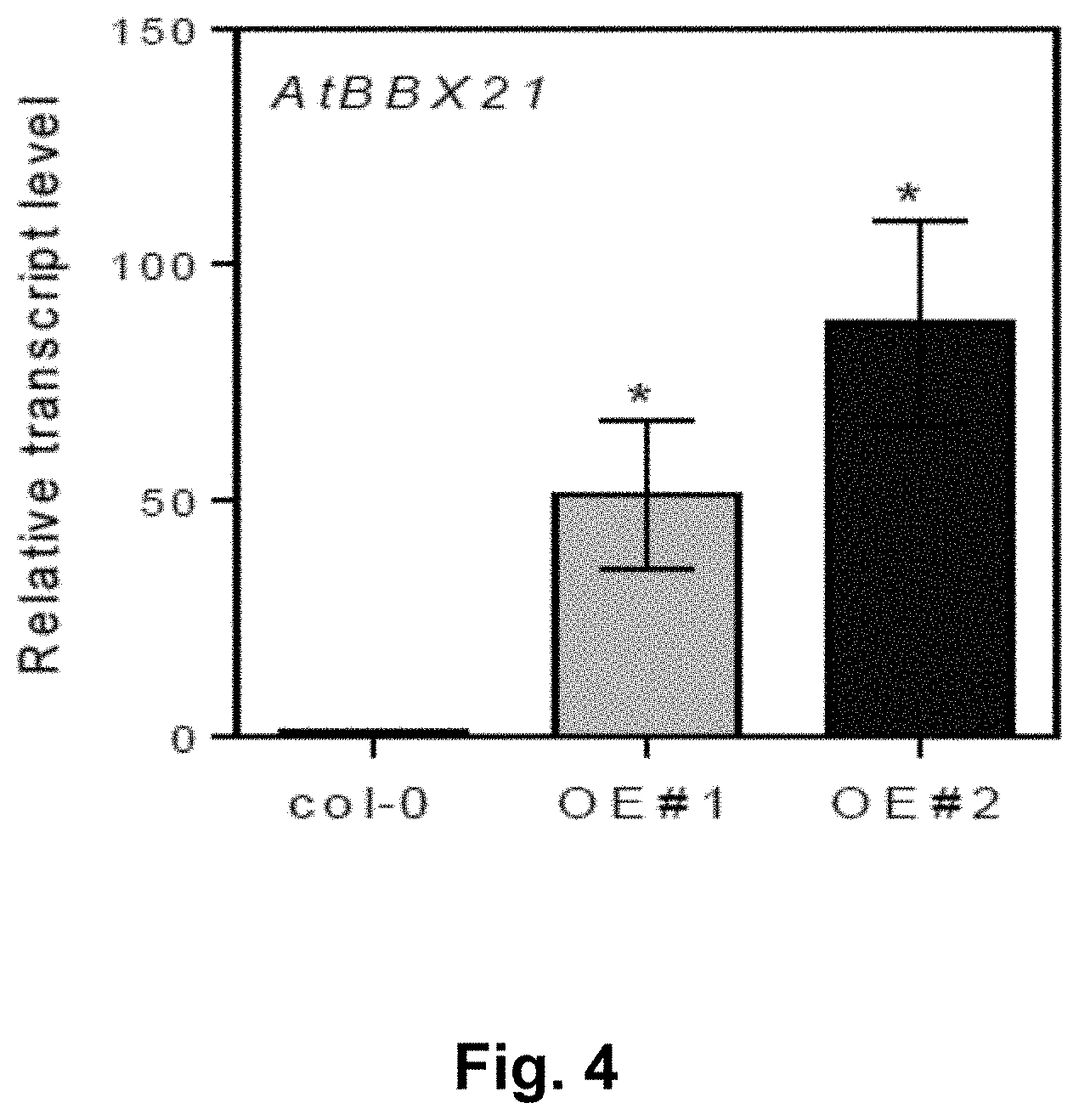
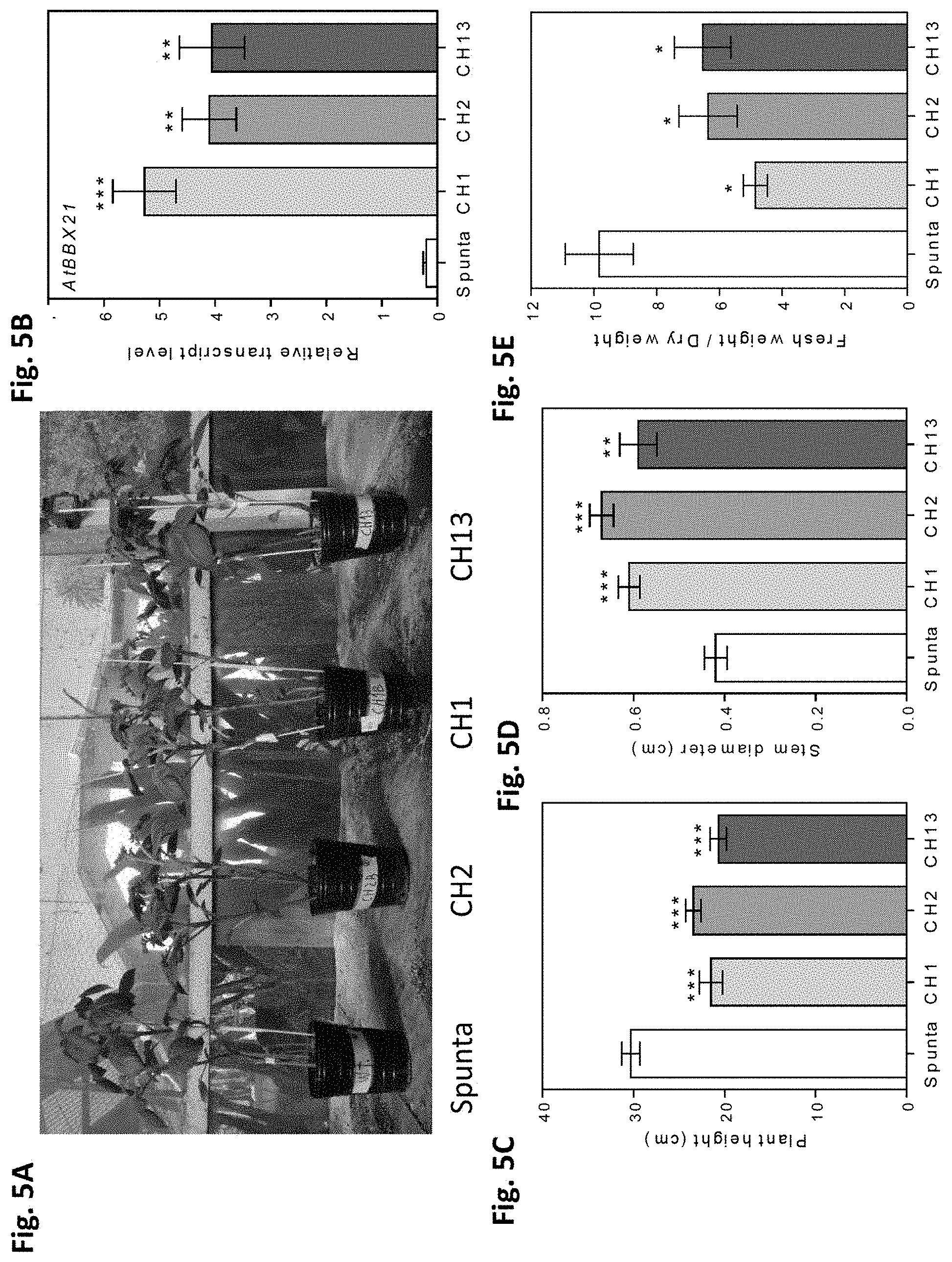
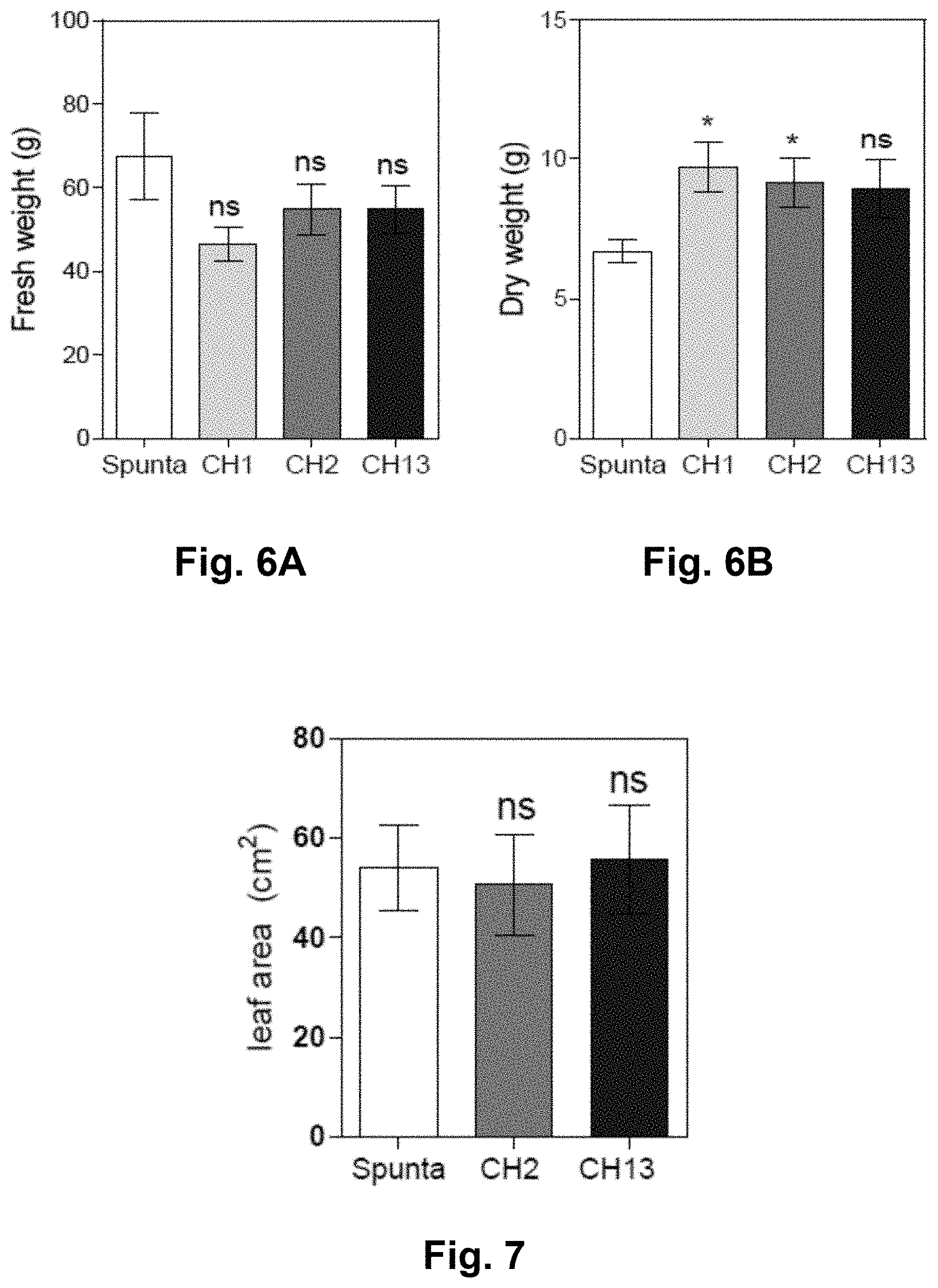
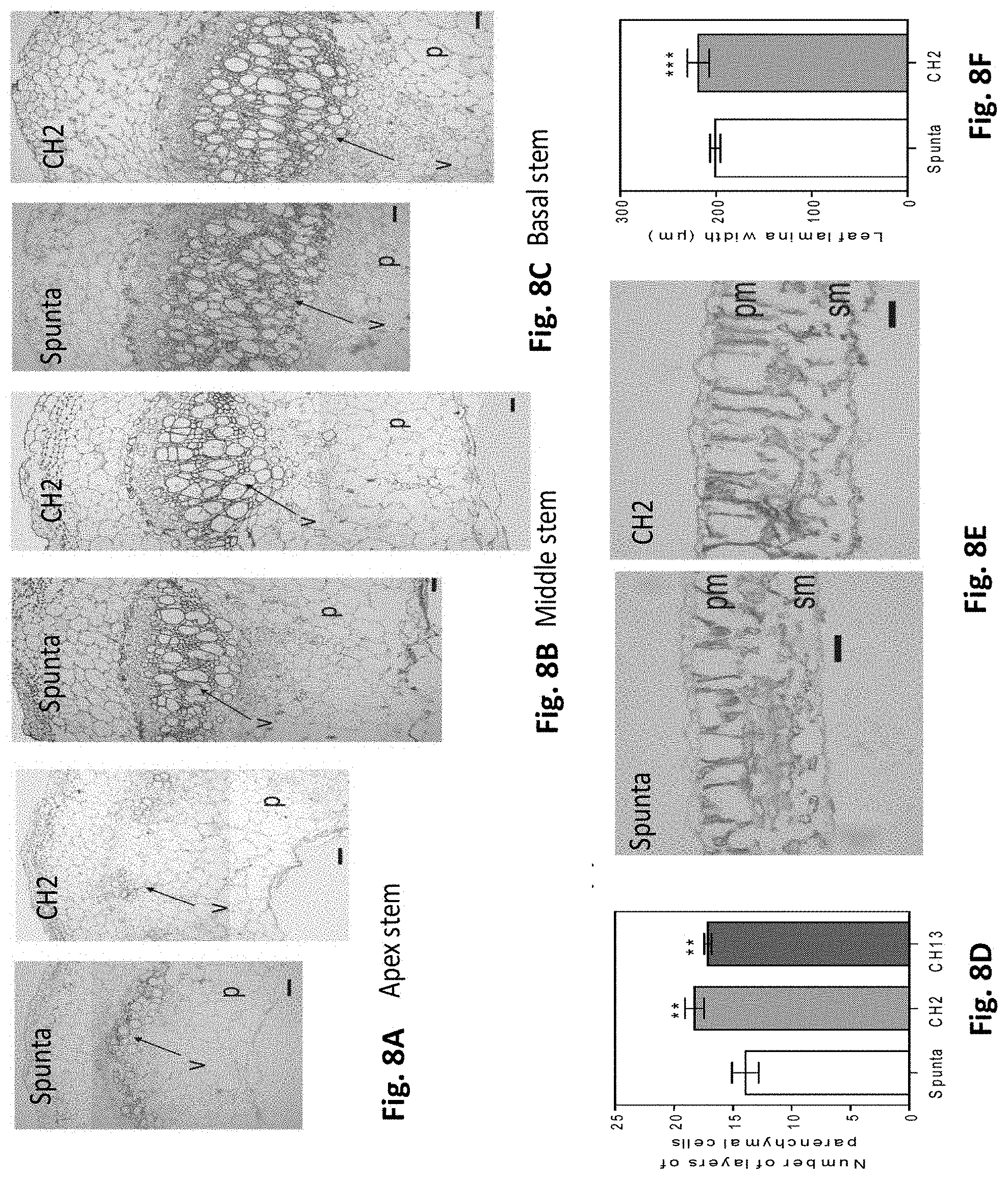
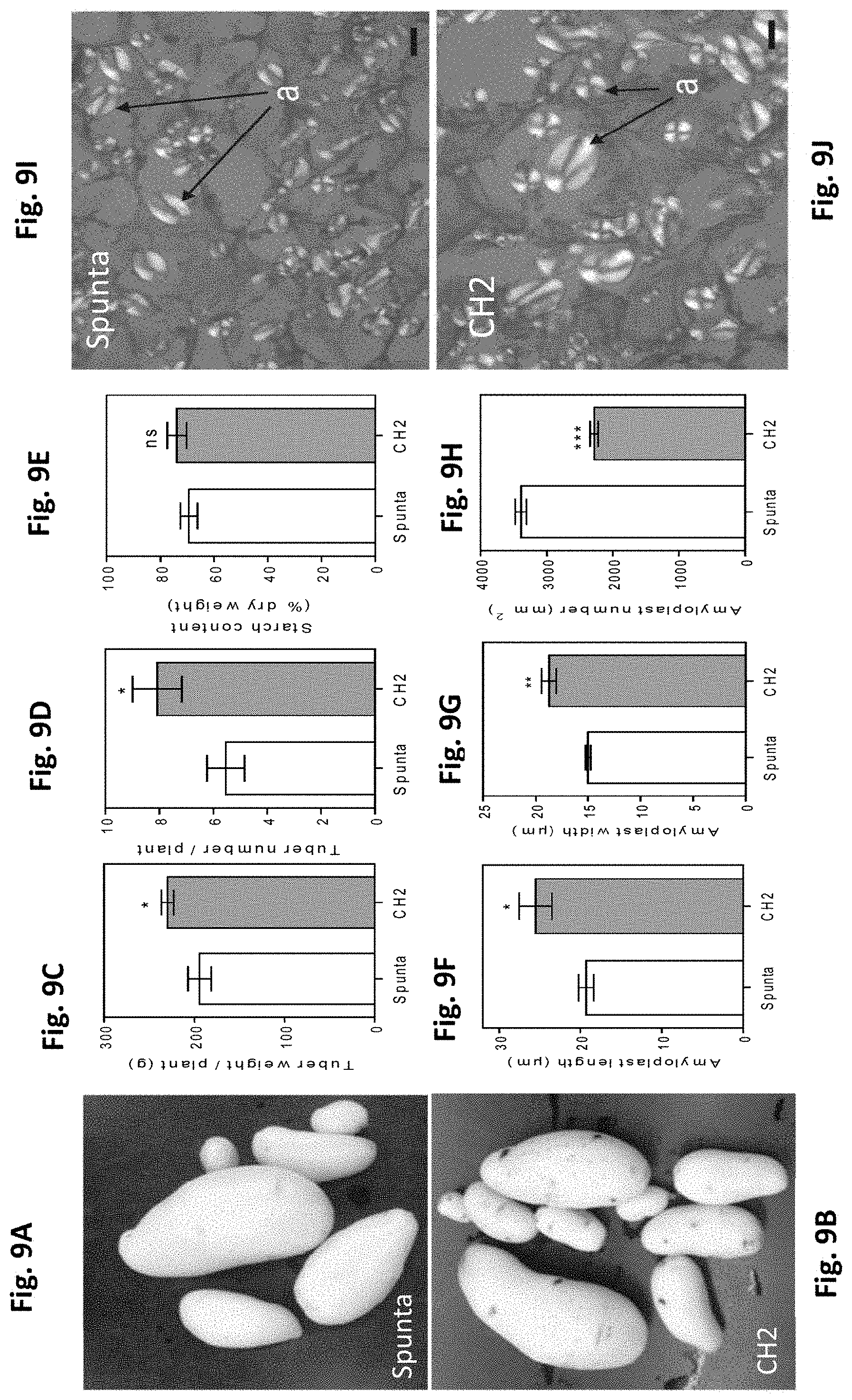
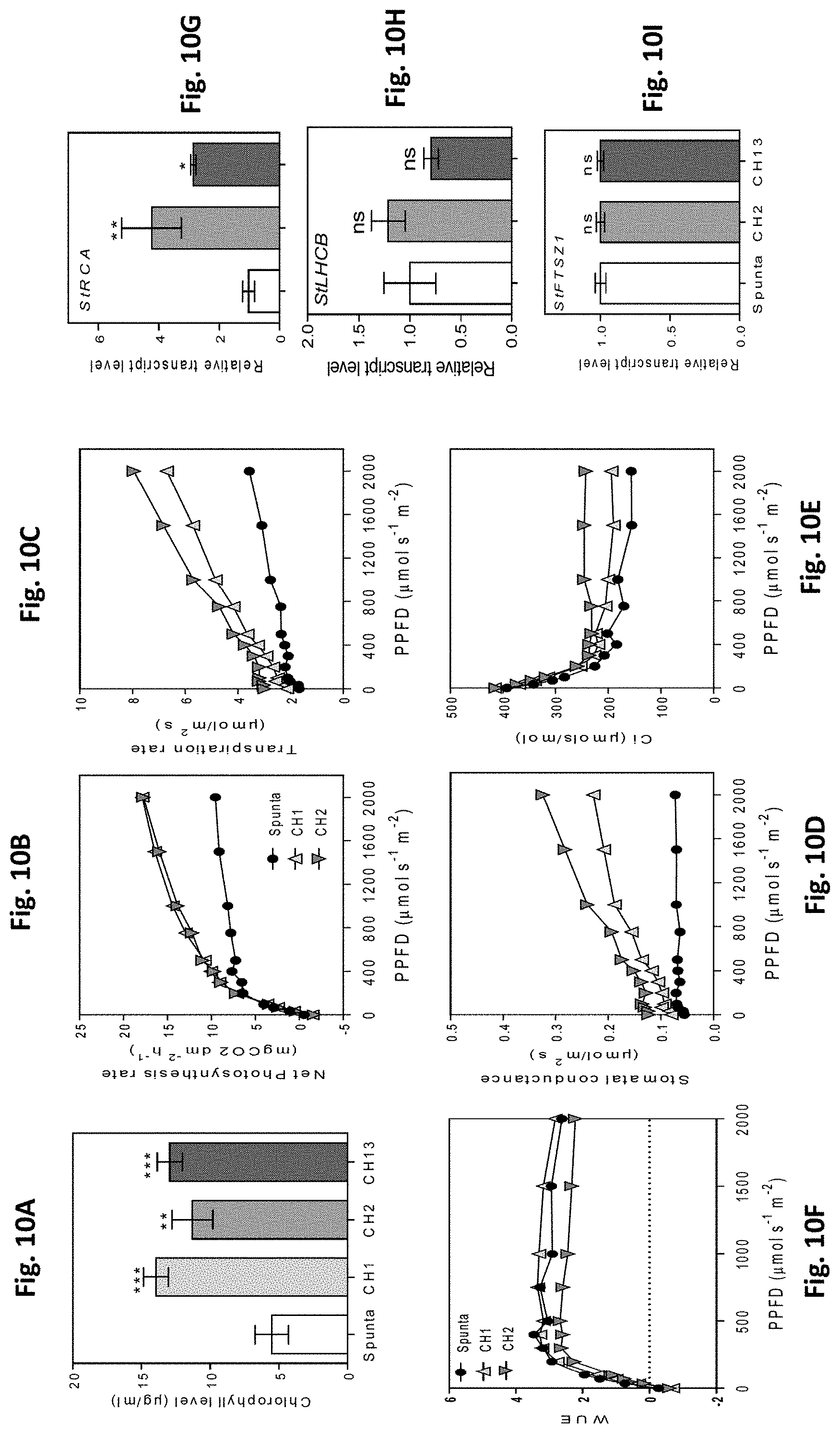
View All Diagrams
| United States Patent Application | 20200299711 |
| Kind Code | A1 |
| BOTTO; Javier Francisco ; et al. | September 24, 2020 |
POLYNUCLEOTIDE CONSTRUCT FOR IMPROVING AGRICULTURAL CHARACTERISTICS IN CROP PLANTS
Abstract
The present invention generally relates to the field of genetic engineering and obtaining transgenic traits for agronomic applications. More specifically, the present invention relates to a specific transgenic event in agricultural crops that improves plant characteristics. Yet more specifically, the invention relates to a polynucleotide construct comprising a gene from Arabidopsis thaliana. In particular, the polynucleotide construct of the invention comprises the gene AtBBX21 which encodes a B-box protein from Arabidopsis thaliana. The transgenic event of the invention increases green and seed yield, reduces photoinhibition, improves water use efficiency, increases tuber and chlorophyll production and improves photosynthetic rates, among others. The polynucleotide construct of the invention comprises a sequence depicted as SEQ ID NO: 1. The invention also provides a transgenic plant transformed with said polynucleotide construct, wherein said plant exhibits improved characteristics. In a particularly preferred embodiment, the transgenic plant is a potato (Solanum tuberosum) plant that overexpresses a gene from Arabidopsis thaliana, wherein said potato plant exhibits improved characteristics.
| Inventors: | BOTTO; Javier Francisco; (Martinez, AR) ; CROCCO; Carlos Daniel; (Escobar, AR) | ||||||||||
| Applicant: |
|
||||||||||
|---|---|---|---|---|---|---|---|---|---|---|---|
| Family ID: | 1000004766333 | ||||||||||
| Appl. No.: | 16/818226 | ||||||||||
| Filed: | March 13, 2020 |
Related U.S. Patent Documents
| Application Number | Filing Date | Patent Number | ||
|---|---|---|---|---|
| 62819919 | Mar 18, 2019 | |||
| Current U.S. Class: | 1/1 |
| Current CPC Class: | C07K 14/415 20130101; C12N 15/8261 20130101 |
| International Class: | C12N 15/82 20060101 C12N015/82; C07K 14/415 20060101 C07K014/415 |
Claims
1. A polynucleotide construct having a sequence as depicted in SEQ ID NO: 1, wherein said sequence comprises the AtBBX21 gene from Arabidopsis thaliana.
2. A transgenic plant comprising a polynucleotide construct according to claim 1, wherein said transgenic plant is obtained by Agrobacterium-mediated transformation of a wild-type plant cell and wherein the transgenic plant presents improved agronomic characteristics as compared to a wild-type, non-transformed plant.
3. The transgenic plant according to claim 2, wherein Agrobacterium-mediated transformation is effected on a plant cell from a plant selected from the group consisting of soybean, sorghum, potato, corn, tomato and barrel clover.
4. The transgenic plant according to claim 3, which is a transgenic potato plant.
5. The transgenic plant according to claim 2, wherein said improved characteristics are selected from the group consisting of increased green and seed yield, reduced photoinhibition, improved water use efficiency, increased tuber production, increased chlorophyll production and improved photosynthetic rates, or a combination thereof.
6. A method for improving agronomical characteristics in crop plants, the method comprising the steps of: (i) providing an agronomical crop plant of interest, (ii) transforming a cell of said agronomical crop plant with a polynucleotide construct according to claim 1, and (iii) growing the transformed agronomical crop plant cell.
7. The method according to claim 6, wherein the agronomical crop plant is selected from the group consisting of soybean, sorghum, potato, corn, tomato and barrel clover.
8. A method for obtaining a transgenic, stress-tolerant crop plant, the method comprising the steps of: (i) providing an agronomical crop plant of interest, (ii) transforming a cell of said agronomical crop plant with a polynucleotide construct according to claim 1, and (iii) growing the transformed agronomical crop plant cell, thus obtaining a transgenic, stress-tolerant crop plant, wherein the stress-tolerant crop plant is tolerant to a stress selected from water stress and high-irradiance stress, or a combination thereof.
9. The method according to claim 8, wherein the agronomical crop plant is selected from the group consisting of soybean, sorghum, potato, corn, tomato and barrel clover.
10. A vector that comprises the polynucleotide construct according to claim 1.
11. A host cell comprising the vector according to claim 10, wherein the host cell is an Agrobacterium tumefaciens strain GV3101.
Description
CROSS REFERENCE TO RELATED APPLICATIONS
[0001] This application claims priority of U.S. Provisional Application No. 62/819,919 filed on Mar. 18, 2019 under 35 U.S.C. .sctn. 119(e), the entire contents of all of which are hereby incorporated by reference.
FIELD OF THE INVENTION
[0002] The present invention generally relates to the field of genetic engineering and obtaining transgenic traits for agronomic applications. More specifically, the present invention relates to a specific transgenic event in agricultural crops that improves plant characteristics. Yet more specifically, the invention relates to a polynucleotide construct comprising a gene from Arabidopsis thaliana. In particular, the polynucleotide construct of the invention comprises the gene AtBBX21 which encodes a B-box protein from Arabidopsis thaliana. The transgenic event of the invention increases green and seed yield, reduces photoinhibition, improves water use efficiency, increases tuber and chlorophyll production and improves photosynthetic rates, among others. The polynucleotide construct of the invention comprises a sequence depicted as SEQ ID NO: 1. The invention also provides a transgenic plant transformed with said polynucleotide construct, wherein said plant exhibits improved characteristics. In a particularly preferred embodiment, the transgenic plant is a potato (Solanum tuberosum) plant that overexpresses a gene from Arabidopsis thaliana, wherein said potato plant exhibits improved characteristics.
BACKGROUND OF THE INVENTION
[0003] Sunlight is essential for autotrophic life. Radiation intensity (measured as photosynthetic photon flux density [PPFD]) is a determinant of plant photosynthesis, during which solar energy is converted into chemical energy and stored as organic carbon. The productivity of a crop depends not only on its photosynthetic rate, but also on other eco-physiological parameters related to crop architecture, such as intercepted radiation and radiation use efficiency (Sinclair T R, Muchow R C (1999) Radiation use efficiency. Adv Agron 65: 215-265; Monteith J L, Moss C J (1977) Climate and the efficiency of crop production in Britain. Philos Trans R Soc Lond B Biol Sci 281: 277-294).
[0004] Light also serves as a sensory cue for the adjustment of plant architecture (Casal J J (2013) Photoreceptor signaling networks in plant responses to shade. Annu Rev Plant Biol 64: 403-427). Molecular genetic studies of model plants in the past few decades have identified many key genes and pathways that control plant photomorphogenesis. Light absorption by different photoreceptors leads to modulation of core signaling networks, which further orchestrates specific hormone and metabolic signaling pathways to precisely affect growth and development (Quail P H (2002) Photosensory perception and signalling in plant cells: new paradigms? Curr Opin Cell Biol 14: 180-188; Lau O S, Deng X W (2012) The photomorphogenic repressors COP1 and DET1: 20 years later. Trends Plant Sci 17: 584-593). Photoreceptors activate many intermediary transcription factors that belong to diverse families that bind to light responsive elements to activate or repress transcription.
[0005] During the hours of the day when the highest levels of solar radiation occur, field-grown plants may experience a process known as photoinhibition. This process is defined as the inhibition of photosynthesis caused by an excess of light, causing a situation of stress in the plants that ultimately affects the daily production of photoassimilates and consequently the final yield of the crops. The effects of light stress are so detrimental to yields that diffusing structures are normally used in many intensive crops to distribute incident sunlight to reduce the stress associated with excess light and allow higher yields of plants grown under these structures. However, in extensive crops, which are carried out on larger areas, the use of diffusing structures is not a feasible practice. The generation of biotechnological events that allow modifying some aspects of the plants so that they can adapt to high solar radiation conditions can be a solution to this problem. The present invention is based on the genetic engineering of a gene that allows generation of improved phenotypes in the modified plants. Consequently, modified plants according to the invention behave better towards different stress conditions, thus displaying a higher yield than conventional plants, among other beneficial characteristics.
[0006] The transgenic events developed to date were focused on the overexpression of genes encoding photoreceptors. These genes are central regulators of plant development, which implies that their manipulation may affect many signaling pathways that can favor a physiological character and at the same time harm another. For example, Solanum tuberosum plants that overexpress the phytochrome B (PhyB) gene, one of the main photoreceptors, produce more robust plants with a higher content of anthocyanins and chloroplasts than non-transformed plants. Although the phenotype of overexpression of phyB improves some characteristics, it also affects other important parameters such as water use efficiency, which is not a positive effect. This means that phyB-overexpressing plants have a high transpiration rate that generates water stress in the plant and can affect the final yield thereof in the field. However, the event proposed herein surgically alters a signaling path that does not modify the efficiency in the use of water at least in optimal water conditions (Boccalandro H E (2003) Increased phytochrome B alleviates density effects on tuber yield of field potato crops. Plant Physiol 33:1539-46).
[0007] Several transcription factors, functioning downstream of one or multiple photoreceptors, have been functionally characterized. For example, ELONGATED HYPOCOTYL5 (HY5) is a central positive regulator of photomorphogenic development in Arabidopsis (Arabidopsis thaliana; Gangappa S N, Botto J F (2016) The multifaceted roles of HY5 in plant growth and development. Mol Plant 9: 1353-1365). HY5 genetically and physically interacts with many signaling components to promote or suppress photomorphogenesis. One important partner of HY5 is CONSTITUTIVE PHOTOMOPHOGENIC1 (COP1), a key suppressor of photomorphogenesis (Lau and Deng, op. cit.). COP1 targets HY5 and many other transcription factors for degradation under dark conditions to promote skotomorphogenesis.
[0008] B-box (BBX) proteins are zinc-finger transcription factors containing one or two B-box motifs. These B-box (BBX) transcription factors also interact physically or genetically with HY5 and COP1. The BBX proteins are a functionally diverse family encoded by genes that are highly conserved across all multicellular plants, including blue-green algae and mosses (Gangappa S N, Botto J F (2014) The BBX family of plant transcription factors. Trends Plant Sci 19: 460-470). In Arabidopsis, 21 out of the 32 BBX proteins (BBX1-13 and BBX18-25) contain two B-boxes in tandem, whereas 11 (BBX14-BBX17 and BBX26-BBX32) contain one B-box. BBX21 regulates plant growth and development throughout the life cycle. BBX21 promotes seed germination in an abscisic acid-dependent manner by interfering with HY5 binding to the ABA-INSENSITIVE5 (AB15) promoter to inhibit ABIS expression (Xu D, Li J, Gangappa S N, Hettiarachchi C, Lin F, Andersson M X, Jiang Y, Deng X W, Holm M (2014) Convergence of Light and ABA signaling on the ABI5 promoter. PLoS Genet 10: e1004197). In addition, BBX21 binds to the T/G-box in the HY5 promoter and directly activates HY5 expression in the light-promoting seedling photomorphogenesis (Xu D, Jiang Y, Li J, Lin F, Holm M, Deng XW (2016) BBX21, an Arabidopsis B-box protein, directly activates HY5 and is targeted by COP1 for 26S proteasome-mediated degradation. Proc Natl Acad Sci USA 113: 7655-7660). The disruption of the second B-box in BBX21 impairs its ability to bind to the HY5 promoter (Xu D, Jiang Y, Li J, Holm M, Deng X W (2018) The B-box domain protein BBX21 promotes photomorphogenesis. Plant Physiol 176: 2365-2375). The relevance of BBX21 to light and abscisic acid signaling in seedling development is well established; however, its importance in adult plant development and agronomic species is poorly understood. Interestingly, BBX32, a BBX that represses seedling photomorphogenesis, physically interacts with BBX21 leading to the inactivation of the BBX21-HY5 protein complex (Holtan H E, Bandong S, Marion C M, Adam L, Tiwari S, Shen Y, Maloof J N, Maszle D R, Ohto M A, Preuss S, et al (2011) BBX32, an Arabidopsis B-Box protein, functions in light signaling by suppressing HY5-regulated gene expression and interacting with STH2/BBX21. Plant Physiol 156: 2109-2123). Furthermore, BBX21 reduces hypocotyl growth in seedlings exposed to shade light by down-regulating cell growth genes through the COP1 signaling pathway (Crocco C D, Holm M, Yanovsky M J, Botto J F (2010) AtBBX21 and COP1 genetically interact in the regulation of shade avoidance. Plant J 64: 551-562).
[0009] The BBX proteins constitute a diverse group of transcription factors whose members have opposing functions; these functions contribute to the homeostatic integration of endogenous and environmental signals for the fine-tuning of several physiological processes (Gangappa S N, Botto J F (2014) op. cit.; Crocco C D, Locascio A, Escudero C M, Alabadi D, Blazquez MA, Botto J F (2015) The transcriptional regulator BBX24 impairs DELLA activity to promote shade avoidance in Arabidopsis thaliana. Nat Commun 6: 6202). It has also been suggested that BBX proteins mediate the adjustment of plant growth under stress (Gangappa S N, Botto J F (2014) op. cit.). The present inventors focused their research experimentation to further characterize the role of BBX21 in order to determine its function in adult plants with a view to obtaining desirable agronomic characteristics.
[0010] Over the last few years, many scientific publications have reported that manipulating the expression of B-Box genes encoding zinc finger proteins, both in A. thaliana and other species, might improve some interesting characteristics for agronomic application (Gangappa S N, Botto J F (2014) op. cit.). However, characterization of BBXs transgenic plants generated to date may be considered weak in the sense that only incomplete physiological parameters have been assessed, without a detailed evaluation of other important physiological and agronomic aspects, such as photosynthesis. As a result, it would be impossible to foresee whether overexpression of the characterized BBX genes would provide an improvement in plant yield without affecting other vital mechanisms and processes that may compromise the optimal functioning of the plant.
[0011] On the other side, the BBX genes overexpression events are evaluated on the model species of interest, and thus there is no information about generalities and relevance of the studied phenomena. In view of this, the present inventors have extensively investigated the overexpression of X21 construct in different species and have surprisingly demonstrated that the transgenic plants obtained are more robust, have higher photosynthetic rates and higher yield, due to a higher production of photoprotective pigments that allow the plant to better respond to photoinhibition of the system towards high irradiances in Arabidopsis thaliana and potato (Solanum tuberosum).
[0012] The approach to this issue and the complete characterization of the plant material obtained by the present inventors, is of high relevance because the molecular and biological functions of BBX regulators are diverse and the engineering thereof may provide an agronomic advantage at the expense of other physiological processes, which would make these projects unfeasible from a commercial point of view.
[0013] It should be mentioned that, another known transgenic event in soy plants has been disclosed in U.S. Pat. No. 9,493,786 B2 (Monsanto). According to this patent, expression of BBX32 gene from Arabidopsis in soy plants results in an increased yield (Preuss S B, Meister R, Xu Q, Urwin C P, Tripodi F A, Screen S E, Anil V S, Zhu S, Morrell J A, Liu G, et al (2012) Expression of the Arabidopsis thaliana BBX32 gene in soybean increases grain yield. PLoS One 7: e30717). However, it was observed by the present inventors that overexpression of such gene in Arabidopsis may produce smaller plants and with a lower yield than wild-type plants, as can be seen in the images of FIG. 1. These results, which are apparently contradictory, suggest that the claimed BBX32 event may not be a good alternative for vegetal enhancement programs for other plant species. BBX32 is a little conserved gene among the plant kingdom and its genetic structure is simple because it only contains one exon (Crocco C D, Botto J F (2013) BBX proteins in green plants: insights into their evolution, structure, feature and functional diversification. Gene 531: 44-52; Gangappa S N, Botto J F (2014) op. cit.). These might be the reasons why BBX32 overexpression has beneficial characteristics in soybean that cannot be extrapolated to other species, such as Arabidopsis.
[0014] As opposed to the BBX32 event mentioned above, the BBX21 gene is highly conserved among monocotyledonous and dicotyledonous plants, as well as in lower photosynthetic organisms (Crocco C D, Botto J F (2013) op. cit.). This structural conservation and the reproducibility of the advantageous features provided by the X21 event, as found herein by the present inventors in Arabidopsis, potato and other species of agronomical interest, allow for increasing the green and seed yield without affecting other relevant agronomical parameters, as previously reported (Crocco C D, Ocampo G G, Ploschuk E L, Mantese A, Botto J F (2018). Heterologous Expression of AtBBX21 Enhances the Rate of Photosynthesis and Alleviates Photoinhibition in Solanum tuberosum. Plant Physiol. 177:39-380).
[0015] Hence, by studying morphological, biochemical, physiological, and photosynthetic effects of the heterologous expression of AtBBX21 gene in potato (Solanum tuberosum) var Spunta and Arabidopsis the inventors were able to design crop varieties having enhanced agronomic features, without negatively affecting other characteristics of agronomic importance such as water usage in the plant, thus, providing a solution to the prior art problem discussed above.
SUMMARY OF THE INVENTION
[0016] B-box (BBX) proteins are zinc-finger transcription factors containing one or two B-box motifs. BBX proteins act as key factors in the networks regulating growth and development. The relevance of BBX21 to light and abscisic acid signaling in seedling development is well established; however, its importance in adult plant development and agronomic species is poorly understood. Therefore, the effect of heterologous expression of Arabidopsis (Arabidopsis thaliana) BBX21 in potato (Solanum tuberosum) var Spunta was studied. Three independent AtBBX21-expressing lines and a wild-type control were cultivated under sunlight and at controlled temperatures in a greenhouse. By anatomical, physiological, biochemical, and gene expression analysis, the present inventors demonstrated that AtBBX21-expressing plants were more robust and produced more tubers than wild-type plants.
[0017] The present invention is based on the genetic engineering of a gene that allows attenuating the effects of photoinhibition in plants modified with the polynucleotide construct according to the invention, maintaining higher photosynthetic rates than non-transformed plants when grown under conditions of high irradiances. Consequently, the modified plants of the invention behave better towards the stress produced by light changes, thus generating a higher yield than conventional plants.
[0018] In other words, AtBBX21-expressing plants as disclosed herein had higher rates of photosynthesis, with a significant increase in photosynthetic gene expression, and higher stomatal conductance, with increased size of the stomatal opening, without any associated decline in water use efficiency.
[0019] The AtBBX21-overexpressing plants generated according to the present invention do not reduce water use efficiency. Therefore, no costs associated with a higher transpiration rate exist.
[0020] Furthermore, as shown by the present inventors AtBBX21-expressing potato plants had reduced photoinhibition associated with higher production of anthocyanins and phenolic compounds, and higher expression of genes in the phenylpropanoid biosynthesis pathway.
[0021] To gain insights into the mechanism of BBX21, the molecular, morphological, metabolic, and photosynthetic behavior in adult BBX21-overexpressing Arabidopsis was evaluated. The experiments allowed concluding that BBX21 overexpression improved morphological and physiological attributes, and photosynthetic rates in non-optimal, high-irradiance conditions, without associated impairment of water use efficiency. In addition, it was observed that BBX21-overexpressing potato plants have a better behavior under water stress with higher levels of chlorophylls and higher tuber yield per plant. Under water stress, transgenic plants have higher water use efficiency than wild type control plants.
[0022] Therefore, BBX21 was found to be useful for increasing production of potatoes, and seed yield in the Brassicaceae model Arabidopsis thaliana.
[0023] Consequently, it is an object of the present invention to provide a polynucleotide construct having the sequence of SEQ ID NO: 1; wherein the polynucleotide construct comprises the BBX21 gene from Arabidopsis thaliana (AtBBX21 gene) More particularly, the polynucleotide construct allows for the overexpression of the gene AtBBX21 in a crop plant of interest.
[0024] Another object of the present invention is to provide a transgenic plant transformed with a polynucleotide construct having the sequence of SEQ ID NO: 1; wherein the transgenic plant is the product of progeny of Agrobacterium-mediated transformation using the expression vector pK2GW7 available from Invitrogen, to which the polynucleotide construct of the invention is inserted.
[0025] According to a preferred embodiment of the above object of the present invention, the transgenic plant is, without limitation, selected from the group consisting of soybean, sorghum, potato, corn, tomato and barrel clover. More preferably, the crop plant is potato.
[0026] According to yet another object of the invention, a method is provided for improving the yield of agronomical crop plants with respect to a control, wild type plant, the method comprising the steps of: (i) providing an agronomical crop plant of interest, (ii) transforming a cell of said agronomical crop plant with a polynucleotide construct having the sequence of SEQ ID NO: 1 according to the present invention, and (iii) growing the transformed agronomical crop plant cell.
[0027] Yet another object of the present invention is to provide a method for obtaining a transgenic, stress-tolerant crop plant, comprising the following steps: (i) providing an agronomical crop plant of interest, (ii) transforming a cell of said agronomical crop plant with a polynucleotide construct having a sequence as depicted in SEQ ID NO: 1, and (iii) growing the transformed agronomical crop plant cell; thus obtaining a transgenic, stress-tolerant crop plant, wherein the stress-tolerant crop plant is tolerant to a stress selected from water stress and high-irradiance stress, or a combination thereof.
[0028] According to preferred embodiments of the invention, the above method may be applied to a crop plant selected from the group consisting of soybean, sorghum, potato, corn, tomato and barrel clover.
[0029] Another object of the present invention is directed to the use of the transgenic event X21 of the invention (BBX21 overexpression in plants) to increase vegetative mass and yield in different crops cultivated under non optimal water conditions (i.e., stress conditions).
[0030] The present invention also provides a vector comprising the polynucleotide construct (X21 transgenic event) of the invention, for transforming an agronomical crop plant of interest, thus obtaining a transformed plant overexpressing the BBX21 gene from Arabidopsis thaliana.
[0031] In a preferred embodiment, the transformation vector is a bacterial vector. More preferably, the bacterial vector is Agrobacterium tumefaciens strain GV3101.
[0032] According to another object of the present invention, a method is provided for improving plant characteristics, such as increasing green and seed yield, reducing photoinhibition, improving water use efficiency, increasing tuber and chlorophyll production and improving photosynthetic rates, among others, the method comprising transforming a non-transformed plant with the transformation vector of the invention.
[0033] In the present invention, the expression "X21 event" is used interchangeably with "BBX21 event" and "AtBBX21 event", where At stands for Arabidopsis thaliana. Similarly, transformed plants carrying said event are referred to herein as "BBX21-overexpressing plants" or "X21-overexpressing plants" or "BBX21-OE plants".
BRIEF DESCRIPTION OF THE DRAWINGS
[0034] The following figures form part of the present disclosure and are included to further illustrate certain aspects of the present invention.
[0035] FIGS. 1A-B. (A) 3-week old and (B) 6-week old adult wild-type (left side of image) and 35s:BBX32-overexpressing (right side of image) Arabidopsis plants (prior art).
[0036] FIGS. 2A-B. Adult Arabidopsis plants of approximately 7-week old (upper panels) and 3-week old (lower panels). (A) Phenotypes of BBX21-overexpressing plants obtained from cDNA (Job N, Yadukrishnan P, Bursch K, Datta S, Johansson H (2018). Two B-Box Proteins Regulate Photomorphogenesis by Oppositely Modulating HY5 through their Diverse C-Terminal Domains. Plant Physiol. 176:2963-2976). (B) Phenotypes of BBX21-overexpressing plants obtained according to the present invention, by using the complete gene (exons plus introns) as a template for the nucleic acid construct of the BBX21 event.
[0037] FIG. 3: pk2GW7 plasmid map, showing the different elements of the vector and main restriction sites. LB: left border; Kan: Kanamycin resistance cassette; p35S: 35S promoter; AttR1: recombination site 1; AtBBX21: cloned sequence of BBX21 gene from Arabidopsis thaliana; AttR2: recombination site 2; t35S: 35S terminator; RB: right border. The cloned sequence for AtBBX21 (SEQ ID NO: 4) includes initiation codon (ATG), stop codon (TGA), exons and introns. The stretch of sequence from LB to RB is depicted as SEQ ID NO: 1. The complete plasmid is 11317pb in length, its sequence contains the inserted construct of the invention (of SEQ ID NO: 1). The complete sequence of this plasmid is depicted as SEQ ID NO: 35.
[0038] FIG. 4. BBX21 transcript levels in two overexpressing lines of Arabidopsis (OE #1 and OE #2). Mean values are shown with error bars indicating SEM. Asterisks indicate significant difference between wild-type (col-0) and BBX21-overexpressing lines (Students t-test, *P<0.05).
[0039] FIGS. 5A-E. Transgenic AtBBX21 potato lines are more robust and shorter than non-transformed plants. (A) Representative photograph of 28-d-old non-transformed (Spunta) and transgenic potato plants (CH1, CH2, and CH13). (B) AtBBX21 transcript levels of the three independent transgenic lines (CH1, CH2, and CH13) used in this study with respect to non-transformed line (Spunta) (n=10). (C) Plant height and (D) stem diameter in 21-d old transgenic potato plants (CH1, CH2, and CH13) and non-transformed plants (Spunta) (n=10). (E) Fresh weight relative to dry weight in 35-d-old transgenic potato plants (CH1, CH2, and CH13) and non-transformed plants (n=10). n=number of biological replicates. Mean values are shown with error bars indicating SE. Asterisks indicate significant difference between non-transformed and transgenic lines (*P, 0.05, **P, 0.01, and ***P, 0.001).
[0040] FIGS. 6A-B: (A) Fresh and (B) dry weight of 35-d-old non-transformed (Spunta) and BBX21-overexpressing potato plants (CH1, CH2, CH13) (n=10 biological replicates). Asterisks indicate significant difference between wild-type and BBX21-overexpressing plants (Students t-test, *P<0.05, ns, not significant).
[0041] FIG. 7: Area of the totally expanded leaf in 28-d-old non-transformed (Spunta) and BBX21-overexpresing (CH2, CH3) potato plants (n=10 biological replicates, ns, not significant).
[0042] FIGS. 8A-F. Heterologous expression of AtBBX21 promotes stem vasculature and leaf thickening in potato plants. Cross section of (A) apex, (B) middle, and (C) basal stems of non-transformed (Spunta) and transgenic plants (CH2). p, Parenchyma; v, vascular bundle. Bar=50 mm. (D) Layer number of parenchymal cells in Spunta and transgenic lines (CH2, CH13) (n=3). (E) Cross section of leaf lamina in Spunta and CH2 plants. pm, palisade mesophyll cell; sm, spongy mesophyll cells. Bar=50 mm. (F) Leaf lamina width (n=3). n=technical replicates for each genotype. Mean values are shown with error bars indicating SE. Asterisks indicate significant difference between non-transformed and transgenic lines (**P, 0.01 and ***P, 0.001).
[0043] FIGS. 9A-J. Heterologous expression of AtBBX21 increases tuber yield in potato plants. Representative photographs of (A) non-transformed (Spunta) and (B) transgenic (CH2) tubers at the end of the experiment. (C) Tuber weight of non-transformed (Spunta) and transgenic (CH2) plants. (D) Tuber number (n=12) of non-transformed (Spunta) and transgenic (CH2) plants. (E) Starch content (n=5) of non-transformed (Spunta) and transgenic (CH2) plants. (F) Amyloplast length of non-transformed (Spunta) and transgenic (CH2) plants. (G) Amyloplast width of non-transformed (Spunta) and transgenic (CH2) plants. (H) Amyloplast number (n=3) of non-transformed (Spunta) and transgenic (CH2) plants. Cross section of tubers of (I) non-transformed (Spunta) and (J) transgenic (CH2) plants. a, Amyloplast. Bar=10 mm. n=number of biological replicates. Mean values are shown with error bars indicating SE. Data were analyzed by Student's t tests, and asterisks indicate significant difference between non-transformed and transgenic lines (*P, 0.05, **P, 0.01, and ***P, 0.001; ns, not significant).
[0044] FIGS. 10A-I. Heterologous expression of AtBBX21 increases photosynthesis in potato plants. (A) Chlorophyll levels of non-transformed (Spunta) and transgenic (CH1, CH2, and CH13) potato leaves (n=10). (B) Photosynthesis, (C) transpiration rate, (D) stomatal conductance, and (E) internal concentration of CO.sub.2 as a function of photosynthetic photon flux density (PPFD) (n=4). (F) WUE (water use efficiency) as a function of PPFD (n=4). (G) StRCA, (H) StLHCB, and (I) StFTSZ1 transcript levels in non-transformed (Spunta) and transgenic (CH2, and CH13) lines (n=4). n=number of biological replicates. Mean values are shown with error bars indicating SE. Data were analyzed by Student's t tests, and asterisks indicate significant difference between non-transformed and transgenic lines (*P, 0.05, **P, 0.01, and ***P, 0.001; ns, not significant).
[0045] FIGS. 11A-D. Heterologous expression of AtBBX21 increases stomatal aperture in potato leaves. (A) Stomatal density and (B) stomatal index estimated as the number of abaxial stomata/adaxial stomata of non-transformed (Spunta) and transgenic (CH2) potato leaves (n=3). (C) Stomatal aperture of non-transformed (Spunta) and transgenic (CH2) lines (n=3). (D), Representative photographs of stomata in non-transformed (Spunta, left panel) and BBX21-overexpressing (CH2, right panel) lines. S, Stomata; 0, opercule. Bar=10 mm. n=number of biological replicates. Mean values are shown with error bars indicating SE. Data were analyzed by Student's t tests, and asterisks indicate significant difference between non-transformed and transgenic lines (*P, 0.05 and ***P, 0.001; ns, not significant).
[0046] FIGS. 12A-D: Stomatal number in the (A) abaxial and (B) adaxial position of non-transformed (Spunta) and BBX21-overexpressing (CH2) lines. (C) Stomatal length and (D) stomatal width of Spunta and CH2 plants (n=3 biological replicates). Mean values are shown with error bars indicating SEM. Asterisks indicate significant difference between non-transformed and BBX21-overexpressing lines (Student's t-test, *P<0.05 and ***P<0.001, ns, not significant).
[0047] FIGS. 13A-D. Heterologous expression of AtBBX21 increases anthocyanin and phenolic levels in potato leaves. (A) Phenolics and (B) anthocyanins content in non-transformed (Spunta) and transgenic (CH1, CH2, and CH13) potato leaves (n=5). (C), Sunscreen pigment accumulation in young and totally expanded leaves. Sunscreen accumulation is revealed by a decrease in the intensity of UV-induced chlorophyll fluorescence (less fluorescence indicates higher accumulation of anthocyanin and phenolic compounds). (D) Maximal photochemical efficiency (Fv/Fm) in 14-d-old plants acclimated at low irradiance (200 mmol m22 s21) and then exposed at high irradiance (900 mmol m22 s21) for 2 h (n=6). n=number of biological replicates. Mean values are shown with error bars indicating SE. Data were analyzed by Student's t tests, and asterisks indicate significant difference between non-transformed and transgenic lines (*P, 0.05 and **P, 0.01; ns, not significant).
[0048] FIGS. 14A-J. BBX21 overexpression promotes rosette expansion, branching, and accumulation of anthocyanins and phenolics in Arabidopsis. (A) Representative photographs showing vegetative rosette (35-d-old plants, left) and (B) secondary flowering ramifications (98-d-old plants, right) in wild-type (Col) and BBX21-overexpressing (BBX21-OE) Arabidopsis plants. (C) Leaf length, (D) width of the fourth expanded leaf, and (E) number of secondary flowering axes (n=8). (F) Anthocyanin and (G) phenolic content in leaves (n=5). (H) CHS, (I) CHI, and (J) F3H transcript levels (n=3). n=number of biological replicates. Mean values are shown with error bars indicating SE. Data were analyzed by Student's t tests, and asterisks indicate significant difference between Col and BBX21-OE Arabidopsis plants (*P, 0.05, **P, 0.01, and ***P, 0.001).
[0049] FIG. 15A-H. Heterologous expression of AtBBX21 in potato promotes gene expression and metabolites accumulation related with the phenylpropanoid pathway in leaves. (A), Diagram of phenylpropanoid pathway and key enzymes. Transcript levels of (B) PAL, (C) CHS, (D) CHI, and (E) F3H (n=4). (F) Chlorogenic acid 1, (G) chlorogenic acid 2, and (H) quercetin glycoside metabolites measured by HPLC (n=5). n=number of biological replicates. Mean values are shown with error bars indicating SE. Data were analyzed by Student's t tests, and asterisks indicate significant difference between non-transformed and transgenic lines (*P, 0.05; ns, not significant).
[0050] FIGS. 16A-H: BBX21 overexpression promotes photosynthesis in Arabidopsis. A, Photosynthesis, (B) transpiration rate, (C) stomatal conductance, and (D) internal concentration of CO.sub.2 as a function of PPFD (n=4). (E) WUE as a function of PPFD (n=4). Transcript levels of (F) FD1, (G) RCA, and (H) LHCA transcripts (n=3). n=number of biological replicates. Mean values are shown with error bars indicating SE. Data were analyzed by Student's t tests, and asterisks indicate significant difference between Col and BBX21-OE plants (*P, 0.05 and **P, 0.01; ns, not significant).
[0051] FIGS. 17A-H: Photographs of 21-d-old non-transformed (left) and BBX21-overexpressing (right) plants Phenotype of non-transformed (wild type, Spunta) and BBX21-overexpressing (CH13) potato plants under (A) white light and (B) simulated shade. (C) Total plant height, (D) internode distance, (F) stem diameter (G) leaf length, (E) anthocyanins and (H) phenolics in plants cultivated in white light (WL) and simulated shade (SS). Mean values are shown with error bars indicating SEM. Asterisks indicate significant difference between non-transformed and BBX21-overexpressing lines (Student's t-test, ns: not significant, *P<0.05, **P<0.01, and ***P<0.001).
[0052] FIG. 18: Heterologous expression of AtBBX21 increases chlorophyll levels in transgenic (CH2, and CH13) potato leaves (n=10) under water stress conditions (65% water restriction with respect to water field capacity, 100% water, control condition).
[0053] FIG. 19: Heterologous expression of AtBBX21 increases Water Use Efficiency (WUE) in upper leaves of BBX21-overexpressing potatoes (CH2 and CH13) cultivated under water stress conditions of 65% water restriction with respect to water field capacity, 100% water, control condition.
[0054] FIG. 20: Heterologous expression of AtBBX21 increases tuber yield in BBX21-overexpressing potatoes (CH2 and CH13) with respect to wild type Spunta plants cultivated under water stress, with 65% of water restriction with respect to the water field capacity of 100% (control).
DETAILED DESCRIPTION OF THE INVENTION
[0055] The knowledge around BBX proteins is quite limited by the complexity and modularity of the molecular signaling pathways they are involved in, and the scarce amount of available functional information (Gangappa S N, Botto J F (2014) op. cit.).
[0056] As it was disclosed hereinabove, the BBX21 transcription factor belongs to structural group IV and contains two B-box domains. The biological roles for BBX21 had not been explored previously, with the exception of its roles in seed germination and seedling photo-morphogenesis in the Arabidopsis model system. In Arabidopsis, BBX21 is a potent transcription factor that promotes photo-morphogenesis (Datta S, Hettiarachchi C, Johansson H, Holm M (2007) SALT TOLERANCE HOMOLOG2, a B-box protein in Arabidopsis that activates transcription and positively regulates light-mediated development. Plant Cell 19: 3242-3255) and inhibits shade avoidance elongation responses (Crocco et al., (2010) op. cit.).
[0057] BBX21 is a pivotal component in the COP1-HY5 regulatory hub that regulates the seedling developmental program during the transition between dark and light (Xu et al., (2018) op. cit.). BBX21 is targeted for 26S proteasome-mediated degradation in darkness, and it is stabilized when seedlings grow in the light, promoting photo-morphogenesis through HY5 activity. Interestingly, BBX21 has also been involved in the promotion of Arabidopsis seed germination by interfering with HY5 binding to the ABIS promoter (Xu et al., (2014) op. cit.).
[0058] Despite many works having studied the function of CONSTANS/BBX1, few studies have focused on the functions of other BBX members in crop species (Gangappa and Botto, (2014) op. cit.). The work carried out by the present inventors reveals a role for BBX21 in crop species and its involvement in the regulation of photosynthetic rate and photoprotection responses in potato and Arabidopsis adult plants. Previous work showed that heterologous expression of Arabidopsis BBX32 in soybean (Glycine max) plants increased grain yield by altering the timing of reproductive development and thus extending the period between pod and seed development (Preuss et al., (2012) op. cit.). More recently, it has been demonstrated that BBX24 overexpression in Chrysanthemum morifolium produced plants with early flowering and increased tolerance to freezing and drought (Yang Y, Ma C, Xu Y, Wei Q, Imtiaz M, Lan H, Gao S, Cheng L, Wang M, Fei Z, Hong B, Gao J (2014) A zinc finger protein regulates flowering time and abiotic stress tolerance in Chrysanthemum by modulating gibberellin biosynthesis. Plant Cell 26: 2038-2054). Considering the results of the work carried out by the present inventors, it is concluded that the overexpression of some members of BBXs (BBX21, BBX24, and BBX32) can contribute to improve crop plant phenotypes, apparently by affecting different physiological features (i.e. phenology, tolerance to stresses, and photosynthesis rates). In the post-green revolution era, optimizing plant energy capture and use is a key target for improvement to increase crop yields. The present invention reveals the importance of BBX21 as a target transcription factor to increase photosynthetic efficiency and reduce photoinhibition by altering anatomical and biochemical features on potato plants with significant positive effects on tuber yield. The use of biotechnological tools to modify the expression levels of the BBX21 transcription factor is proposed herein as a more useful strategy than photoreceptor transgenesis, to avoid non-desirable pleiotropic effects such as the decreased WUE (water use efficiency) previously documented in PHYB-overexpressing lines (Boccalandro H E, Rugnone M L, Moreno J E, Ploschuk E L, Serna L, Yanovsky M J, Casal J J (2009) Phytochrome B enhances photosynthesis at the expense of water-use efficiency in Arabidopsis. Plant Physiol 150: 1083-1092) Taking into account the results that were obtained in potato plants cultivated under natural radiation in a greenhouse, the present inventors postulate that enhanced BBX21 levels could be used in breeding programs to increase tuber yield of other commercial potato genotypes.
[0059] Finally, it should be mentioned that, besides the different and advantageous agronomic features provided by the BBX21 event, as demonstrated in the present invention, this event also differs from other agronomical events of the state of the art in the methodology used for the generation of the transgenic material. The present inventors have used the complete DNA (genomic DNA or gDNA) of the BBX21 gene, while, the most common procedure in the art is to use the cDNA (complementary DNA) for generating new constructs. In the case of overexpressing the BBX21 gene from cDNA a totally opposite phenotype is observed as compared to the one obtained when working with the complete DNA from BBX21 gene in Arabidopsis thaliana (FIG. 2, (A) Job et al (2018) op. cit. and (B) Crocco et al (2018) op. cit.). Comparatively, overexpression of BBX21 from cDNA renders smaller plants when compared to wild type plants, with a lower number of branches and flowers, while overexpression of BBX21 from DNA renders robust plants having a larger size (FIG. 2). Normally, genes selected for heterologous expression are cloned by using the cDNA as a template, which is only comprised of coding DNA. However, when cloning a gene by using DNA as a template, amplification is effected on both exons (coding region) and introns (non-coding region). Many introns may pose relevant functions for mRNA transcription, maturation or edition, and even house non-coding RNA (ncRNA) involved in the regulation of gene expression and cell processes. In humans, several evidences demonstrated that phenotypic variants associated with diseases are the consequence of multiple steps of RNA processing and mRNA dynamics, including splicing, 3''end processing, mRNA structure and stability, translation efficiency and regulation by RNA-binding proteins and by microRNAs (Manning K, Cooper T A (2017) The roles of RNA processing in translating genotype to phenotype. Nat Rev Mol Cell Biol. 18: 102-114). According with that, it is hypothesized that the genes cloned from DNA may have different functions than those cloned from cDNA in plants.
EXAMPLES
[0060] The invention is further illustrated by the following Examples, which are not intended to limit the scope thereof. Instead, the examples set forth below should be understood only as exemplary embodiments for better taking into practice the present invention.
[0061] In the following, all experimental assays were conducted under controlled greenhouse conditions with natural photoperiod and radiation. The greenhouse was located at the Faculty of Agronomy, University of Buenos Aires (34.degree. 35'S, 58.degree. 29'W), with natural radiation (PAR=500 .mu.mol m.sup.-2 s.sup.-1) and temperatures ranging between 18.degree. C. and 22.degree. C. The experiments were carried out between March and November with a photoperiod of around 13.5 h.
[0062] For the statistical analysis of experimental data, a completely randomized ANOVA design was used. Mean comparisons between control and transgenic lines were done with Student's t test. Analyses were carried out using Prism (GraphPad Software).
Example 1
[0063] Obtaining Genomic DNA from Plants and Cloning Protocol for the X21 Event
[0064] Young (21-day old) leaf tissue samples from Arabidopsis thaliana plants of the Columbia ecotype (Col) were used for this cloning technique. DNA extraction was carried out as follows: [0065] 1. Freshly cut green material is ground with liquid N.sub.2. [0066] 2. Pulverized plant material is placed in a 1.5 ml Eppendorf tube and resuspended with 750 .mu.l CTAB buffer (2.times.), (2% CTAB, 100 mM Tris base pH 8.0, 10 mM EDTA and 0.7M NAC1, and adding water up to 500 ml and autoclave). Then, 30 .mu.l of 2-13 mercaptoethanol are added. The mixture is stirred gently and incubated for 30 minutes at 65.degree. C. [0067] 3. 300 .mu.l potassium acetate (3M, pH 4.8) are added, slightly mixed and incubated on ice for 15 min. The mixture is centrifuged for 10 min at 14,000 rpm and then the supernatant is transferred to a new, clean Eppendorf tube. [0068] 4. 500 .mu.l of a mixture of chloroform: isoamylic alcohol (24:1) are added, gently mixed by inverting the tube and centrifuged for 10 min at 14,000 rpm. [0069] 5. The upper layer is carefully pipetted to a tube with 500 .mu.l cold isopropanol for precipitating DNA, and then incubated on ice for 60 min. [0070] 6. DNA is centrifuged for 5 min at 14,000 rpm and supernatant was discarded. [0071] 7. The DNA pellet is washed twice with 500 .mu.l cold 70% ethanol. The remaining ethanol is discarded and the tube is left in a stove at 37.degree. C. for 15 minutes for allowing the DNA to dry completely. [0072] 8. DNA is resuspended in 30-50 .mu.l milliQ H.sub.2O. DNA amplification by PCR: for amplification of DNA fragments using taq DNA polymerase (Invitrogen).
[0073] The cloning of the X21 event was performed via PCR amplification of the At1g75540 locus, using primers (forward and reverse primers as detailed below) containing attB recombination sites.
[0074] The forward primer (GatFor172) hybridizes from the ATG transcription initiation codon. The sequence of GatFor172 is depicted below and in the Sequence listing of this application.
TABLE-US-00001 Forward primer (GatFor172): (SEQ ID NO: 2) 5'-GGGGACAAGTTTGTACAAAAAAGCAGGCTCCATGAAGATCAGGTGCGA CGT-3'
[0075] The reverse primer (GatRev_172) includes the STOP codon for the locus within its sequence. The sequence of GatRev_172 is depicted below and in the Sequence listing of this application.
TABLE-US-00002 Reverse primer (GatRev_172): (SEQ ID NO: 3) 5'-GGGGACCACTTTGTACAAGAAAGCTGGGTCTTACCAGAAAGATCTAAA CT-3'
[0076] The conditions for the PCR amplification were as follows: initial cycle at 95.degree. C. for 4 min, followed by 95.degree. C. for 30 secs (denaturing), 54.degree. C. for 1 min (alignment), 72.degree. C. for 1:30 min (extension). 30 cycles were run. The amplified product was separated electrophoretically in a 1% agarose gel with 0.5.times.TBE. Later, the band corresponding to the molecular weight of event X21 was separated and purified.
[0077] The amplification product comprises a sequence string from the ATG initiation codon to the TGA stop codon (termination codon) of the AtBBX21 gene. Thus, said sequence comprises all the open reading frame (ORF) of the AtBBX21 gene, which includes UTRs, exons and introns.
[0078] Thus, the cloned sequence for the At1g75540 gene is depicted in the Sequence listing of this application as SEQ ID NO: 4.
[0079] The generated PCR fragment (full-length DNA) amplified all the coding region of the BBX21 gene, which was introduced into the pDonor (pDon221) plasmid (Invitrogen) and subsequently, was inserted into an expression vector (pk2GW7) containing the 35s constitutive promoter, using the Gateway cloning technique (Invitrogen). The pk2GVV7 vector containing the X21 event was used to transform chemically competent bacteria E. coli Dh5.alpha. for amplification. This plasmid vector (pk2GW7) thus contains the polynucleotide construct of SEQ ID NO: 1 for transformation of crop plants of the invention. FIG. 3 shows a map of vector pk2GW7, depicting the different relevant elements of the plasmid.
[0080] Selection of the colonies was effected by using a medium containing the antibiotic kanamycin, thus, only those colonies containing the plasmid with the At1g75540 gene correctly inserted survived. This way, several colonies were selected and the presence of the gene was analyzed by colony-PCR using the primers GatFor172 (SEQ ID NO: 2) and GatRev_172 (SEQ ID NO: 3) as disclosed herein above.
[0081] Sequencing of three colonies was requested to a specialized facility and the sequences thereof were compared to the one published in the Arabidopsis Biological Resource Center database.
[0082] One selected colony was cultured in fresh LB media with kanamycin antibiotic, for generating plasmid biomass. Plasmid DNA was purified by miniprep. The resulting purified plasmid DNA was introduced into the Agrobacterium tumefaciens strain GV3101 through electroporation. Those bacteria that had incorporated the plasmid with the At1g75540 locus, were selected in solid LB media with the antibiotics kanamycin, spectinomycin and rifampicin. One of these positive colonies during selection was transferred to liquid LB media with the antibiotics kanamycin, spectinomycin and rifampicin. This vector (comprising the polynucleotide construct of SEQ ID NO: 1) was used for transforming A. thaliana (see FIG. 4), Solanum tuberosum and other plants by the floral dip method as previously described by Bechtold and Pelletier (Bechtold, N. and Pelletier, G. (1998) In planta Agrobacterium-mediated transformation of adult Arabidopsis thaliana plants by vacuum infiltration. Methods Mol. Biol. 82, 259-266.).
[0083] FIG. 4 shows the BBX21 transcript levels in wild-type (col-0) and transformed (OE #1 and OE #2) Arabidopsis plants, confirming the overexpression of the AtBBX21 gene in those transformed plants that incorporated the construct of the invention, as measured in a quantification assay using AtBBX21 sense and antisense primers (SEQ ID NO: 5 and 6, respectively) listed in Table 1 below.
TABLE-US-00003 TABLE 1 Arabidopsis thaliana BBX21 gene Primers used for gene Gene code quantification AtBBX21 At1g75540 AtBBX21 sen: CGACATCTGTCAGGATAAA (SEQ ID NO: 5) AtBBX21 ant: GTTCGCAGCGTGGATCGAT (SEQ ID NO: 6)
[0084] Preferably, Agrobacterium tumefaciens strain GV3101 is the host for the transformation vector of the invention, containing the BBX21 gene from A. thaliana. Transformed crop plants of interest are obtained via A. tumefaciens-mediated transformation.
[0085] As proven herein, when cloning the BBX21 gene from the genomic DNA of Arabidopsis thaliana for overexpressing it in the plant species Arabidopsis and potato, a surprising phenotype of high agronomical value is obtained. Also, as shown in the present invention, the phenotypes of Arabidopsis plants as obtained when conventional techniques are used for cloning the BBX21 gene, are opposed to those obtained when complete DNA is used, according to the present invention (see, e.g., FIG. 2). The present inventors hypothesize that the non-coding regions may play a regulatory role, not yet described, which provide plants with the advantageous features disclosed herein.
[0086] The transgenic plants generated according to the present invention, expressing the BBX21 gene from Arabidopsis thaliana, were more robust and produced more tubers than the corresponding wild-type plants. In turn, these plants proved to have higher photosynthetic rates, showed significant increase in photosynthesis gene expression as well as a reduced photoinhibition, without evidencing an associated negative effect in terms of water use efficiency. Similar features are observed when expression of this event is carried out in the model plant Arabidopsis thaliana and other crops of agronomic interest, as demonstrated in the examples disclosed herein below.
[0087] The BBX21 gene is highly conserved throughout green plants, and physiological evidence has been comparable for Arabidopsis and Solanum, these being two evolutionary distant species. The BBX21 event may thus be used in other dicotyledonous plants of agronomical interest, for enhancing the yields thereof.
Example 2
[0088] Heterologous Expression of AtBBX21 in Potato Plants
[0089] Full-length BBX21 was expressed under the control of a 35S promoter in S. tuberosum var. Spunta. Transgenic potato plants were generated successfully by Agrobacterium tumefaciens-mediated transformation. 13 independent transgenic lines were obtained. To confirm the presence of BBX21 in transgenic potato plants, reverse transcription quantitative PCR (RT-qPCR) analysis was conducted for assessing the expression of BBX21 gene. RT-qPCR analysis was performed on an optical 96-well plate using SYBR Green PCR master mix (Applied Biosystems) and an ABI PRISM 7500 real-time PCR system (Applied Biosystems). Gene-specific primer pairs were designed using Beacon Designer 7.0 (Premier Biosoft). The primers used in this work are those mentioned in Example 1. The expression of each gene was normalized to tubulin (TUB) and each treatment was standardized to wild-type expression (see Table 2 below):
TABLE-US-00004 TABLE 2 Tubulin gene, standard reference for normalization of expression level Primers used for gene Gene Code quantification TUB at5g44340 TUB sen: AACCTCCATTCAGGAGATGTTT (SEQ ID NO: 7) TUB ant: TCTGCTGTAGCATCCTGGTATT (SEQ ID NO: 8)
[0090] Three independent transgenic lines (CH1, CH2, and CH13) displayed at least 4-fold higher levels of the BBX21 transgene than wild-type Spunta plants (FIG. 5, a and b). These three lines (CH1, CH2, and CH13) were used for further experiments according to the availability of tubers.
[0091] Transgenic and non-transformed plants were grown under natural radiation, a photoperiod of 13.5 h light, and a controlled temperature between 18 and 22.degree. C. in a greenhouse for 21 d. BBX21-overexpressing plants were on average significantly shorter and had significantly wider basal stems than control Spunta plants (P, 0.001; FIG. 5c).
[0092] By the end of the experiment, BBX21-overexpressing plants showed a significant reduction in the fresh/dry weight ratio compared with the control and consequently had a higher dry weight (FIG. 5d; FIG. 6). In addition, no differences were detected in the leaf area between genotypes (FIG. 7). Transgenic plants showed a wider vasculature (FIG. 8) and more layers of parenchyma cells than control plants (FIG. 8, a and b). These features were observed in the apical, medium, and basal sections of the stem (FIG. 8a). In addition, transgenic plants had slightly thicker leaf blades than control plants (FIG. 8c).
[0093] The present inventors hypothesized that the anatomical and morphological differences of BBX21-overexpressing plants could affect tuber yield at harvest. In an independent experiment, the number and weight of tubers was evaluated in transgenic and non-transformed plants at harvest. It was found that transgenic plants had a 15% higher tuber yield and smaller tubers compared to control plants (FIG. 9, a and b). However, the tuber quality in terms of starch content was similar between genotypes (FIG. 9b). In addition, the number of amyloplasts contained in the tubers of transgenic lines was lower than in control Spunta plants, and the length and width of amyloplasts were higher than control plants (FIG. 9, c and d).
[0094] Therefore, based on this assay, it is clearly demonstrated that the heterologous expression of Arabidopsis BBX21 in potato resulted in short, robust plants with a higher tuber yield than non-transformed plants.
Example 3
[0095] Study of Photosynthesis in AtBBX21-Expressing Plants
[0096] The present inventors speculated that the higher levels of chlorophyll detected in transgenic plants (FIG. 10a) may reflect improved photosynthesis. So, the net photosynthetic rate and related photosynthetic traits in 28-d-old plants was measured.
[0097] For this experiment, measurements were carried out in an open infrared gas analysis system (Li-Cor 6400). Light functions were measured at 0, 30, 50, 100, 200, 300, 400, 500, 750, 1,000, 1,500, and 2,000 mmol m22 s21. Photosynthetic photon flux density (PPFD) was done in fully expanded leaves using the 6400-02B LED light source chamber. Air flow and CO.sub.2 concentration in the reference cell (CO.sub.2R) were automatically controlled by the equipment at 300 mmol s21 and 400 mmol s21 (ppm), respectively. Water use efficiency was estimated as the ratio of carbon assimilation and transpiration (net photosynthesis rate/transpiration rate).
[0098] It was found that transgenic lines had higher photosynthetic rates than control Spunta plants between 400 mmol m.sup.-2 s.sup.-1 and 2,000 mmol m.sup.-2 s.sup.-1 PPFD, although no differences were found between genotypes under non-saturating PPFD quantum yields (see slopes in FIG. 10b). In addition, these plants showed higher transpiration rates and stomatal conductance (FIG. 10b).
[0099] Interestingly, the water use efficiency (WUE) was similar between genotypes, indicating that the higher photosynthetic rates of transgenic lines did not affect WUE (FIG. 10c). In addition, a positive relationship was found between higher rates of photosynthesis and an increase in the expression of the RCA (Rubisco ACTIVASE), but not LHCB (LIGHT-HARVESTING CHLOROPHYLL-B) or FTSZ1 (PLASTID-DIVIDING RING) photosynthetic genes (FIG. 10d).
[0100] The following table 3 shows the photosynthesis genes measured in FIG. 9d for potato.
TABLE-US-00005 TABLE 3 Solanum Tuberosum-Photosynthesis genes. Primers used for Gene Code gene quantification StLHCB1 PGSC0003DMG400008299 StLHCB1 sen: TCTTGGCCATCTGGGCTTGC (SEQ ID NO: 9) StLHCB1 ant: TGGGTCAAAGCTGCCACCAG (SEQ ID NO: 10) StRCA PGSC0003DMT400049256 StRCA1 sen: ACTGGGCACCAACCAGAGAA (SEQ ID NO: 11) StRCA1 ant: AGGGAAGGCATCGACAAGCC (SEQ ID NO: 12) StFTSZ1 PGSC0003DMG400022200 StFtsz1 sen: CAGTCTGCTGCCGAGAACCC (SEQ ID NO: 13) StFtsz1 ant: GACTCCTCCGCTGCCTGTTC (SEQ ID NO: 14)
[0101] In addition, the increase of photosynthetic activity in transgenic lines compared with non-transformed plants could be associated with stomatal differences. Although the number of stomata was similar between genotypes, significant differences were found in the distribution of stomata in the leaf (FIG. 11a). The level of anphistomy (the increase of stomata density more intensively in the adaxial than in the abaxial side of the leaf) was higher in transgenic lines than control plants. This was indicated by a reduction in the stomatal index, calculated as the density of abaxial stomata/adaxial stomata (FIG. 11a; FIG. 12a). More interestingly, the stomatal area was significantly higher in transgenic plants than in control plants (FIG. 11, b and c). This increase was associated with a higher stomata length but did not show a relationship with stomata width (FIG. 12b). Thus, the higher stomatal area probably contributed to the increased photosynthetic activity observed in transgenic plants (FIG. 10b).
[0102] In conclusion, transgenic potato plants had a higher photosynthetic rate and stomatal conductance, which was associated with a larger stomatal opening.
Example 4
[0103] Determination of Photoinhibition in Transgenic Plant Leaves
[0104] A classical photomorphogenic response is the synthesis of anthocyanins when plants are exposed to light (Mancinelli A L, Rossi F, Moroni A (1991) Cryptochrome, phytochrome, and anthocyanin production. Plant Physiol 96: 1079-1085). The abundance of anthocyanins and phenolic compounds was measured in 21-d-old transgenic and non-transformed plants.
[0105] The three transgenic lines showed a significant increase in anthocyanin and total phenolic compound levels (FIG. 13(a)), and this correlated with a lower fluorescence in the leaves (FIG. 13(b)).
[0106] Previous studies reported that the increase in anthocyanin and phenols levels in the leaves improve the photoprotection at high irradiance (Gould K S, Kuhn D N, Lee D W, Oberbauer S F (1995) Why leaves are sometimes red. Nature 378: 241-242; Manetas Y, Drinia A, Petropoulou Y (2002) High contents of anthocyanins in young leaves are correlated with low pools of xanthophyll cycle components and low risk of photoinhibition. Photosynthetica 40: 349-354; Steyn W J, Wand S J E, Holcroft D M, Jacobs G (2002) Anthocyanins in vegetative tissues: a proposed unified function in photoprotection. New Phytol 155: 349-361; Harvaux M, Kloppstech K (2001) The protective functions of carotenoid and flavonoid pigments against excess visible radiation at chilling temperature investigated in Arabidopsis npq and tt mutants. Planta 213: 953-966). To evaluate this possibility, an experiment with 14-d-old plants that were acclimated at a low irradiance (200 mmol m22 s21) and then exposed to high irradiance (900 mmol m22 s21) for 2 h was carried out. The photoinhibition of photosystem II was estimated by measuring the maximal photochemical efficiency of photosystem II (Fv/Fm) at both levels of irradiance. It was found that Fv/Fm was similar between genotypes at low irradiance, but the photoinhibition of the photosystem II was higher in non-transformed plants than in transgenic plants exposed to high irradiance (FIG. 13(c)).
[0107] Although anthocyanin and phenolic contents were higher in BBX21-overexpressing transgenic potato and Arabidopsis plants, a similar potential quantum yield was observed when transgenic or non-transformed plants were subjected to low acclimation radiation (i.e. Fv/Fm around 0.85; FIG. 13). Interestingly, a protective effect of these pigments was observed in BBX21-overexpressing plants after exposure to high PPFD, since only non-transformed plants were photoinhibited (Fv/Fm dropped below 0.7; FIG. 13(c)). These results suggest that the reduced photoinhibition of photosystem II in transgenic potato plants may be associated with the accumulation of photoprotective metabolites, leading to a higher photosynthetic rate. It was demonstrated that high transcript levels of several genes involved in the phenylpropanoid pathway (PAL1, CHS, and F3H) led to an increase in anthocyanin and phenolic compound levels in potato and Arabidopsis plants (FIGS. 13 and 14).
[0108] The table 4 below shows the genes involved in the phenylpropanoid biosynthesis that were measured in wild-type and transformed Arabidopsis thaliana plants, as shown in FIG. 13D:
TABLE-US-00006 TABLE 4 Arabidopsis thaliana-phenylpropanoid biosynthesis genes Primers used for gene Gene Code quantification AtF3H AT3G51240 AtF3H sen: AAGGTTGGGTGAAAGTGACG (SEQ ID NO: 15) AtF3H ant: TCAGTGTGACGCTTGAGTCC (SEQ ID NO: 16) AtCHI AT3G55120 AtCHI sen: CGGGATCGCTGTGATCGAGA (SEQ ID NO: 17) AtCHI ant: GCCAGGTGACACACCGTTCT (SEQ ID NO: 18) AtCHS AT5G13930 AtCHS sen: CGGCGTCGACATGCCTGGTG (SEQ ID NO: 19) AtCHS ant: AGTACCGCCGGCGAAGCAAC (SEQ ID NO: 20)
[0109] Interestingly, the induction of a photoprotective acclimation mechanism to avoid the photosystem damage against excess visible radiation that is mediated by UV/blue light-absorbing flavonoids has been previously demonstrated using non-photochemical quenching mutants of Arabidopsis (Harvaux and Kloppstech (2001) op. cit.). In accordance with the present results, PHYB overexpression increased the resistance of the potato photosynthetic apparatus to UV-B, which was associated with a higher accumulation of chlorophylls, carotenoids, and flavonoids in the leaves (Kreslayski V D, Kosobryukhov A A, Shmarev A N, Aksenova N P, Konstantinova T N, Golyanovskaya S A, Romanov G A (2015) Introduction of the Arabidopsis PHYB gene increases resistance of photosynthetic apparatus in transgenic Solanum tuberosum plants to UV-8 radiation. Russ J Plant Physiol 62: 204-209).
[0110] On average, the Fv/Fm was reduced by around 25% in control plants and 10% in the three transgenic lines. These results suggest a role for BBX21 in protecting against high irradiance, probably by inducing the accumulation of anthocyanin and phenolic compounds in their leaves.
[0111] In conclusion, plants generated according to the invention exhibited reduced photoinhibition, which was related to a higher production of anthocyanins and phenolics, as well as an increase in expression of phenylpropanoid biosynthesis genes.
Example 5
[0112] Phenylpropanoid Signaling Pathway
[0113] The phenylpropanoid signaling pathway induces the accumulation of flavonol glycosides, anthocyanin derivates, and chlorogenic acid by activating the expression of specific enzymes (FIG. 15a).
[0114] In the present example, the expression of PAL1 (PHE AMMONIA LYASE1), CHS (CHALCONE SYNTHASE), CHI (CHALCONE ISOMERASE), and F3H (FLAVANONE 3-HYDROXYLASE) was evaluated with RT-qPCR, as well as the accumulation of two chlorogenic acids and quercetin glycoside metabolites with HPLC.
[0115] The table 5 below shows the genes involved in the phenylpropanoid biosynthesis pathway that were measured in FIG. 15b.
TABLE-US-00007 TABLE 5 Solanum Tuberosum-genes of the phenylpropanoid biosynthesis pathway. Primers used for gene Gene Code quantification StCHS PGSC0003DMT400022261 StCHS sen: CTATGGCAATATGTCAAGT (SEQ ID NO: 21) StCHS ant: CTTCACCTGTAGTTCCTA (SEQ ID NO: 22) StF3H PGSC0003DMT400031149 StF3H sen: ACATTCGGATCCTGGTGGCA (SEQ ID NO: 23) StF3H ant: GTTGTTGCGTCGGACCTGAA (SEQ ID NO: 24) StCHI PGSC0003DMG400028325 StCHI A sen: TGCCCTTGACGGGTAAGCAA (SEQ ID NO: 25) StCHI A ant: GGCACCAGGTGGGAAGGTTT (SEQ ID NO: 26) StPAL1 PGSC0003DMT400080765 StPAL1 sen: CATCTCCACAATGGCTTGG (SEQ ID NO: 27) StPAL1 ant: TTGGAAGTTGCCACCATGT (SEQ ID NO: 28)
[0116] In general terms, all of these were higher in leaves of transgenic plants than control plants with the exception of CHI expression (FIG. 15, b and c).
[0117] These results explain the higher levels of anthocyanins and phenolic compounds in transgenic potato plants compared to non-transformed plants, as was determined in Example 4.
Example 6
[0118] Rosette Expansion, Branching, and Accumulation of Anthocyanin and Phenolic Compounds in Arabidopsis Plants
[0119] To gain insight into the role of BBX21 in adult plants, two BBX21-overexpressing Arabidopsis lines (BBX21-OE #1 and OE #2) and the wild-type control (Col-0) were cultivated in a greenhouse with natural radiation.
[0120] It was found that BBX21-OE lines produced bigger rosettes with longer and wider leaves than Col-0 (FIG. 14, A and B). In addition, BBX21-OE plants showed profuse flowering with a significantly higher number of secondary axes and seed yield than wild-type plants (FIG. 14A; data not shown). The levels of anthocyanins and phenols were evaluated in 35-d-old Arabidopsis plants and it was found that BBX21-OE plants produced higher levels of anthocyanins and phenols (FIG. 14C), corroborating the results observed in heterologous expression of AtBBX21 in potato plants. Accordingly, the gene expression of CHS, F3H, and CHI was significantly higher in BBX21-OE than control plants (FIG. 14D).
[0121] In other experiments, the photosynthesis rates of BBX21-OE and wild-type plants cultivated in a greenhouse were examined. 35-d-old Arabidopsis plants were exposed to different PPFDs and net photosynthesis rates and related photosynthetic traits were evaluated. It was found that BBX21-OE plants showed higher photosynthesis rates, transpiration rates and stomatal conductance than wild-type plants at high irradiances (200 mmol m.sup.-2 s.sup.-1; FIG. 16A). In accordance with the inventor's data in potato plants, the WUE was similar between genotypes (compare FIGS. 16B and 10c).
[0122] The following table 6 shows the genes involved in photosynthesis for Arabidopsis thaliana in FIG. 15C.
TABLE-US-00008 TABLE 6 Arabidopsis Thaliana-Photosynthesis genes. Primers used for gene Gene Code quantification AtRCA1 AT2G39730 AtRCA sen TCGTTGAGAGCCTTGGAGTT (SEQ ID NO: 29) AtRCA ant CTGAGGTAGGTCTCGGCAAG (SEQ ID NO: 30) ATFD1 AT1G10960 AtFD1sen AAGAGGTCGAATGCGAAGAA (SEQ ID NO: 31) AtFD1ant GTCGGATAAGCCACACAGGT (SEQ ID NO: 32) AtLHCA1 AT3G54890 AtLHCA1 sen CGCTTATGAGCTGTGGCATA (SEQ ID NO: 33) AtLHCA1 ant CGCTGGAACTTCTTCAAGTC (SEQ ID NO: 34)
[0123] The expression of FD1 (FERRODOXIN-1) and RCA photosynthetic genes showed higher levels in BBX21-OE plants than in wild-type plants, as expected for the higher activity of the photosynthetic apparatus (FIG. 16C).
[0124] In conclusion, some of these features (photoinhibition and production of anthocyanins and phenolics) were confirmed in mature BBX21-overexpressing Arabidopsis lines.
[0125] It was also demonstrated that high transcript levels of several genes involved in the phenylpropanoid pathway (PAL1, CHS, and F3H) led to an increase in anthocyanin and phenolic compound levels in potato and Arabidopsis plants.
[0126] Photosynthesis/PPFD relationships revealed that both heterologous expression of AtBBX21 in potato plants and BBX21-overexpressing Arabidopsis lines dramatically increased photosynthetic rates by up to 60% under saturating irradiances without altering quantum yield (FIGS. 10b and 16A). In addition, RCA and FD1 photosynthesis related genes were up-regulated in both BBX21-overexpressing potato and Arabidopsis plants (FIGS. 10d and 16C). These responses were closely related to stomatal conductance and the higher internal CO2 concentration in BBX21-overexpressing transgenic Arabidopsis and potato plants, suggesting that stomatal aperture is the major causal effect of the higher photosynthesis rate (Flexas J, Ribas-Carbo M, Bota J, Galmes J, Henkle M, Martinez-Canellas S, Medrano H (2006) Decreased Rubisco activity during water stress is not induced by decreased relative water content but related to conditions of low stomatal conductance and chloroplast CO2 concentration. New Phytol 172: 73-82). Although the stomatal distribution in the leaves differed between transgenic and non-transformed plants, no differences in the number of stomata were observed. Therefore, the effect of stomatal abundance is not associated with the higher photosynthesis rate observed in BBX21-overexpressing plants (FIGS. 10 and 16). These results suggest that radiation use efficiency may be higher in a BBX21-overexpressing potato crop depending on plant architecture and light extinction across the canopy.
[0127] BBX21-overexpressing potato and Arabidopsis plants had enhanced rates of CO2 uptake and transpiration as well as an increase in stomatal conductance without any associated negative effect on WUE (FIGS. 10c and 16B). An enhanced photosynthetic rate was previously observed in PHYTOCHROME B (PHYB)-overexpressing potato and Arabidopsis plants (Thiele A, Herold M, Lenk I, Quail P H, Gatz C (1999) Heterologous expression of Arabidopsis phytochrome B in transgenic potato influences photosynthetic performance and tuber development. Plant Physiol 120: 73-82; Boccalandro H E, Ploschuk E L, Yanovsky M J, Sanchez RA, Gatz C, Casal J J (2003) Increased phytochrome B alleviates density effects on tuber yield of field potato crops. Plant Physiol 133: 1539-1546; Boccalandro et al., (2009) op. cit.). However, in contrast to BBX21 overexpression, PHYB overexpression reduced the WUE in Arabidopsis plants (Boccalandro et al., (2009) op. cit.). Considering that BBX21 overexpression in potato and Arabidopsis did not affect the WUE (FIGS. 10c and 16B), the results obtained herein suggest a partial cross talk between BBX21 and PHYB signaling pathways. Several genes have been found to be involved in traits associated with WUE. The expression of some genes can increase or decrease the expression of others, forming a complex network of interactions. Such complex networks involve genotype-by environment interactions as well as epistatic interactions.
Example 7
[0128] Study of Stem Elongation of Transgenic Plants Under Simulated Shade
[0129] As it was previously demonstrated by the present inventors, BBX21 inhibits shade avoidance responses in Arabidopsis seedlings (Crocco et al., (2010) op. cit.). Thus, the authors hypothesize that the heterologous expression of AtBBX21 in potato plants might display a reduced shade avoidance response because of the reduced cell elongation in the stems.
[0130] To test this, 21-d-old potato plants were cultivated under either white light or simulated shade in a growth chamber. As expected, a significantly reduced shade avoidance response for internode stem elongation in transgenic plants was observed in comparison to control plants (FIG. 17). In addition, transgenic plants showed a constitutive phenotype with shorter and wider stems than non-transformed plants independently of light treatments.
[0131] Interestingly, transgenic plants showed constitutively high levels of anthocyanins and phenols that were independent of light treatment. In opposition, the abundance of these compounds increased in control plants under shade.
Example 8
[0132] Determination of Physiological Parameters of Transgenic Plants Grown Under Hydric Restriction Conditions
[0133] Potato is known to be a water-stress-sensitive crop. The present inventors decided to study the behavior of the transgenic potato lines obtained according to the invention in a hydric restriction assay.
[0134] To this end, transgenic and non-transformed plants were grown under water restraint conditions (65% water with respect to field capacity of 100% water in the soil). As can be seen in FIG. 18, under water stress conditions BBX21-overexpressing plants synthesize more chlorophyll with respect to WT plants. In turn, when water use efficiency (WUE) was measured, an improvement was observed in transgenic plants when compared to wild type plants (see FIG. 19).
[0135] Tuber production was also tested under this water shortage condition in the field. BBX21-overexpressing plants presented an increase of at least 8% by weight of tubers per plant with respect to control WT plants. Results are shown in FIG. 20.
[0136] In conclusion, water restraint improves the behavior of plants overexpressing the BBX21 event according to the present invention.
Sequence CWU 1
1
3515175DNAArtificial Sequencepolynucleotide construct for X21 event
1tgatcacagg cagcaacgct ctgtcatcgt tacaatcaac atgctaccct ccgcgagatc
60atccgtgttt caaacccggc agcttagttg ccgttcttcc gaatagcatc ggtaacatga
120gcaaagtctg ccgccttaca acggctctcc cgctgacgcc gtcccggact
gatgggctgc 180ctgtatcgag tggtgatttt gtgccgagct gccggtcggg
gagctgttgg ctggctggtg 240gcaggatata ttgtggtgta aacaaattga
cgcttagaca acttaataac acattgcgga 300cgtttttaat gtactgaatt
aacgccgaat tgaattatca gcttgcatgc cggtcgatct 360agtaacatag
atgacaccgc gcgcgataat ttatcctagt ttgcgcgcta tattttgttt
420tctatcgcgt attaaatgta taattgcggg actctaatca taaaaaccca
tctcataaat 480aacgtcatgc attacatgtt aattattaca tgcttaacgt
aattcaacag aaattatatg 540ataatcatcg caagaccggc aacaggattc
aatcttaaga aactttattg ccaaatgttt 600gaacgatctg cttgactcta
gctagagtcc gaaccccaga gtcccgctca gaagaactcg 660tcaagaaggc
gatagaaggc gatgcgctgc gaatcgggag cggcgatacc gtaaagcacg
720aggaagcggt cagcccattc gccgccaagc tcttcagcaa tatcacgggt
agccaacgct 780atgtcctgat agcggtccgc cacacccagc cggccacagt
cgatgaatcc agaaaagcgg 840ccattttcca ccatgatatt cggcaagcag
gcatcgccgt gggtcacgac gagatcctcg 900ccgtcgggca tccgcgcctt
gagcctggcg aacagttcgg ctggcgcgag cccctgatgc 960tcttcgtcca
gatcatcctg atcgacaaga ccggcttcca tccgagtacg tgctcgctcg
1020atgcgatgtt tcgcttggtg gtcgaatggg caggtagccg gatcaagcgt
atgcagccgc 1080cgcattgcat cagccatgat ggatactttc tcggcaggag
caaggtgaga tgacaggaga 1140tcctgccccg gcacttcgcc caatagcagc
cagtcccttc ccgcttcagt gacaacgtcg 1200agcacagctg cgcaaggaac
gcccgtcgtg gccagccacg atagccgcgc tgcctcgtct 1260tggagttcat
tcagggcacc ggacaggtcg gtcttgacaa aaagaaccgg gcgcccctgc
1320gctgacagcc ggaacacggc ggcatcagag cagccgattg tctgttgtgc
ccagtcatag 1380ccgaatagcc tctccaccca agcggccgga gaacctgcgt
gcaatccatc ttgttcaatc 1440atgcctcgat cgagttgaga gtgaatatga
gactctaatt ggataccgag gggaatttat 1500ggaacgtcag tggagcattt
ttgacaagaa atatttgcta gctgatagtg accttaggcg 1560acttttgaac
gcgcaataat ggtttctgac gtatgtgctt agctcattaa actccagaaa
1620cccgcggctg agtggctcct tcaacgttgc ggttctgtca gttccaaacg
taaaacggct 1680tgtcccgcgt catcggcggg ggtcataacg tgactccctt
aattctcatg tatgataatt 1740cgagctctcc catatggtcg actagagcca
agctgatctc ctttgccccg gagatcacca 1800tggacgactt tctctatctc
tacgatctag gaagaaagtt cgacggagaa ggtgacgata 1860ccatgttcac
caccgataat gagaagatta gcctcttcaa tttcagaaag aatgctgacc
1920cacagatggt tagagaggcc tacgcggcag gtctcatcaa gacgatctac
ccgagtaata 1980atctccagga gatcaaatac cttcccaaga aggttaaaga
tgcagtcaaa agattcagga 2040ctaactgcat caagaacaca gagaaagata
tatttctcaa gatcagaagt actattccag 2100tatggacgat tcaaggcttg
cttcataaac caaggcaagt aatagagatt ggagtctcta 2160agaaagtagt
tcctactgaa tcaaaggcca tggagtcaaa aattcagatc gaggatctaa
2220cagaactcgc cgtgaagact ggcgaacagt tcatacagag tcttttacga
ctcaatgaca 2280agaagaaaat cttcgtcaac atggtggagc acgacactct
cgtctactcc aagaatatca 2340aagatacagt ctcagaagac caaagggcta
ttgagacttt tcaacaaagg gtaatatcgg 2400gaaacctcct cggattccat
tgcccagcta tctgtcactt catcaaaagg acagtagaaa 2460aggaaggtgg
cacctacaaa tgccatcatt gcgataaagg aaaggctatc gttcaagatg
2520cctctgccga cagtggtccc aaagatggac ccccacccac gaggagcatc
gtggaaaaag 2580aagacgttcc aaccacgtct tcaaagcaag tggattgatg
tgatatctcc actgacgtaa 2640gggatgacgc acaatcccac tatccttcgc
aagacccttc ctctatataa ggaagttcat 2700ttcatttgga gaggactccg
gtatttttac aacaatacca caacaaaaca aacaacaaac 2760aacattacaa
tttactattc tagtcgacct gcaggcggcc gcactagtga tatcacaagt
2820ttgtacaaaa aagctgaacg agaaacgtaa aatgatataa atatcaatat
attaaattag 2880attttgcata aaaaacagac tacataatac tgtaaaacac
aacatatcca gtcactatga 2940tgagttcaac tgtttcaaat ccccaaggaa
tcctgcaacc aggctcattt ctgcttccag 3000aatcagaatc tatgaaaaaa
gaggaagcag agttagtttc tgtgtgttgg aatcaggatt 3060caagttgttt
tgcagctgga acgagtcatg gttttcgtat atataactgt gaacctttca
3120aagaaacttt caggcgtgag ctaaaggacg gtggttttaa aatcgtagag
atgcttttcc 3180gtagcaatat actggcactt gttggtggtg gacctaactc
tcagtatcct tcaagcaaag 3240tactaatttg ggatgatcat cagagccgtt
gcattagtga atttgcattt aggtctgaga 3300ttcgtgcagt gaaattaaga
agggatcgga ttgttgttgt tcttgaacat aagatttatg 3360tttataactt
tatggatctt agacttcttc atcagattga aactcaagct aatcctagag
3420gattgtgttg cctttctcat cattctaata cgtctgtgtt ggcttgccct
ggtctcaatc 3480gaggagagat tcgtgttgaa catttcgggc ttaacatggt
acaaatcata aatgctcatg 3540attcaagtat tgcgtgtatg accttgacat
tggatggttt gttgcttgca actgctagta 3600caaagggaac tctgattaga
atcttcaaca caatggatgg aactcgtttg caagaggtaa 3660atatcagata
ctggtttgct ttgatcactg tattacatta ctaacaattc aaaggtgttt
3720ctttataggt acgaagagga gtcgacagag cagatatata tagcattgca
ctttcaccaa 3780atgtgcagtg gctggcggta tcaagtgaca aggggactgt
tcacattttc tctcttagag 3840ttagggttgt tggggaggat tcttattcca
ctgaaaatgg agctctgttg acacaacaaa 3900attattctaa ttctctgcaa
ggccttgttt ctccaaccat tggtaccaat cccggttcgt 3960cattgtcgtt
tatgagaggt aaggaaaaat tctatgtagt agctctaagt ccaagagatt
4020tattgactat gtagtagcta agtccaagag atttactccc ttcatagttg
caggattgtt 4080aagattatac atttttgtta acgttattct ttctcttgtt
tattatctct tccatgaatg 4140tagaaatggg aagaatggtg tttttgaaat
gctactttga agccttaaaa attcgttcgc 4200tctttcttac ctaacatgta
cactcttgtt gcaggtgttc taccaaagta tttcagctcg 4260gaatggtcat
atgcacagtt tcatgtatca gaagtcacac aattcttcgc agcatttggc
4320agtaacaaca cggttgctat tatcggcatg gatggaaggt ataatcccaa
ataagcccat 4380tcactttgta tttccatcac actaccagga atctttaacc
agagcaagta cactagttgt 4440gcatctataa aaaccactct cagatctcgg
cttagtgctt acttgtgttt tcttgtctca 4500gtttctaccg atgcagcttt
gatcccgtga acggaggaga gatggggcaa ctggaatata 4560tccactttat
gaagatggac aaccgcccgt gacatagtga ctggatatgt tgtgttttac
4620agtattatgt agtctgtttt ttatgcaaaa tctaatttaa tatattgata
tttatatcat 4680tttacgtttc tcgttcagct ttcttgtaca aagtggtgat
atcccgcggc catgctagag 4740tccgcaaaaa tcaccagtct ctctctacaa
atctatctct ctctattttt ctccagaata 4800atgtgtgagt agttcccaga
taagggaatt agggttctta tagggtttcg ctcatgtgtt 4860gagcatataa
gaaaccctta gtatgtattt gtatttgtaa aatacttcta tcaataaaat
4920ttctaattcc taaaaccaaa atccagtgac ctgcaggcat gcgacgtcgg
gcccaagctt 4980agcttgagct tggatcagat tgtcgtttcc cgccttcagt
ttaaactatc agtgtttgac 5040aggatatatt ggcgggtaaa cctaagagaa
aagagcgttt attagaataa cggatattta 5100aaagggcgtg aaaaggttta
tccgttcgtc catttgtatg tgcatgccaa ccacagggtt 5160cccctcggga tcaaa
5175251DNAArtificial Sequenceforward primer GatFor172 2ggggacaagt
ttgtacaaaa aagcaggctc catgaagatc aggtgcgacg t 51350DNAArtificial
Sequencereverse primer GatRev_172 3ggggaccact ttgtacaaga aagctgggtc
ttaccagaaa gatctaaact 5041653DNAArabidopsis thaliana 4atgagttcaa
ctgtttcaaa tccccaagga atcctgcaac caggctcatt tctgcttcca 60gaatcagaat
ctatgaaaaa agaggaagca gagttagttt ctgtgtgttg gaatcaggat
120tcaagttgtt ttgcagctgg aacgagtcat ggttttcgta tatataactg
tgaacctttc 180aaagaaactt tcaggcgtga gctaaaggac ggtggtttta
aaatcgtaga gatgcttttc 240cgtagcaata tactggcact tgttggtggt
ggacctaact ctcagtatcc ttcaagcaaa 300gtactaattt gggatgatca
tcagagccgt tgcattagtg aatttgcatt taggtctgag 360attcgtgcag
tgaaattaag aagggatcgg attgttgttg ttcttgaaca taagatttat
420gtttataact ttatggatct tagacttctt catcagattg aaactcaagc
taatcctaga 480ggattgtgtt gcctttctca tcattctaat acgtctgtgt
tggcttgccc tggtctcaat 540cgaggagaga ttcgtgttga acatttcggg
cttaacatgg tacaaatcat aaatgctcat 600gattcaagta ttgcgtgtat
gaccttgaca ttggatggtt tgttgcttgc aactgctagt 660acaaagggaa
ctctgattag aatcttcaac acaatggatg gaactcgttt gcaagaggta
720aatatcagat actggtttgc tttgatcact gtattacatt actaacaatt
caaaggtgtt 780tctttatagg tacgaagagg agtcgacaga gcagatatat
atagcattgc actttcacca 840aatgtgcagt ggctggcggt atcaagtgac
aaggggactg ttcacatttt ctctcttaga 900gttagggttg ttggggagga
ttcttattcc actgaaaatg gagctctgtt gacacaacaa 960aattattcta
attctctgca aggccttgtt tctccaacca ttggtaccaa tcccggttcg
1020tcattgtcgt ttatgagagg taaggaaaaa ttctatgtag tagctctaag
tccaagagat 1080ttattgacta tgtagtagct aagtccaaga gatttactcc
cttcatagtt gcaggattgt 1140taagattata catttttgtt aacgttattc
tttctcttgt ttattatctc ttccatgaat 1200gtagaaatgg gaagaatggt
gtttttgaaa tgctactttg aagccttaaa aattcgttcg 1260ctctttctta
cctaacatgt acactcttgt tgcaggtgtt ctaccaaagt atttcagctc
1320ggaatggtca tatgcacagt ttcatgtatc agaagtcaca caattcttcg
cagcatttgg 1380cagtaacaac acggttgcta ttatcggcat ggatggaagg
tataatccca aataagccca 1440ttcactttgt atttccatca cactaccagg
aatctttaac cagagcaagt acactagttg 1500tgcatctata aaaaccactc
tcagatctcg gcttagtgct tacttgtgtt ttcttgtctc 1560agtttctacc
gatgcagctt tgatcccgtg aacggaggag agatggggca actggaatat
1620atccacttta tgaagatgga caaccgcccg tga 1653519DNAArtificial
Sequenceprimer AtBBX21 sense 5cgacatctgt caggataaa
19619DNAArtificial Sequenceprimer AtBBX21 antisense 6gttcgcagcg
tggatcgat 19722DNAArtificial Sequenceprimer TUB sense 7aacctccatt
caggagatgt tt 22822DNAArtificial Sequenceprimer TUB antisense
8tctgctgtag catcctggta tt 22920DNAArtificial Sequenceprimer StLHCB1
sense 9tcttggccat ctgggcttgc 201020DNAArtificial Sequenceprimer
StLHCB1 antisense 10tgggtcaaag ctgccaccag 201120DNAArtificial
Sequenceprimer StRCA sense 11actgggcacc aaccagagaa
201220DNAArtificial Sequenceprimer StRCA antisense 12agggaaggca
tcgacaagcc 201320DNAArtificial Sequenceprimer StFTSZ1 sense
13cagtctgctg ccgagaaccc 201420DNAArtificial Sequenceprimer StFTSZ1
antisense 14gactcctccg ctgcctgttc 201520DNAArtificial
Sequenceprimer AtF3H sense 15aaggttgggt gaaagtgacg
201620DNAArtificial Sequenceprimer AtF3H antisense 16tcagtgtgac
gcttgagtcc 201720DNAArtificial Sequenceprimer AtCHI sense
17cgggatcgct gtgatcgaga 201820DNAArtificial Sequenceprimer AtCHI
antisense 18gccaggtgac acaccgttct 201920DNAArtificial
Sequenceprimer AtCHS sense 19cggcgtcgac atgcctggtg
202020DNAArtificial Sequenceprimer AtCHS antisense 20agtaccgccg
gcgaagcaac 202119DNAArtificial Sequenceprimer StCHS sense
21ctatggcaat atgtcaagt 192218DNAArtificial Sequenceprimer StCHS
antisense 22cttcacctgt agttccta 182320DNAArtificial Sequenceprimer
StF3H sense 23acattcggat cctggtggca 202420DNAArtificial
Sequenceprimer StF3H antisense 24gttgttgcgt cggacctgaa
202520DNAArtificial Sequenceprimer StCHI sense 25tgcccttgac
gggtaagcaa 202620DNAArtificial Sequenceprimer StCHI antisense
26ggcaccaggt gggaaggttt 202719DNAArtificial Sequenceprimer StPAL1
sense 27catctccaca atggcttgg 192819DNAArtificial Sequenceprimer
StPAL1 antisense 28ttggaagttg ccaccatgt 192920DNAArtificial
Sequenceprimer AtRCA1 sense 29tcgttgagag ccttggagtt
203020DNAArtificial Sequenceprimer AtRCA1 antisense 30ctgaggtagg
tctcggcaag 203120DNAArtificial Sequenceprimer ATFD1 sense
31aagaggtcga atgcgaagaa 203220DNAArtificial Sequenceprimer ATFD1
antisense 32gtcggataag ccacacaggt 203320DNAArtificial
Sequenceprimer AtLHCA1 sense 33cgcttatgag ctgtggcata
203420DNAArtificial Sequenceprimer AtLHCA1 antisense 34cgctggaact
tcttcaagtc 203511317DNAArtificial Sequencenucleotide sequence of
plasmid pK2GW7 35ttgtgtaggg cttattatgc acgcttaaaa ataataaaag
cagacttgac ctgatagttt 60ggctgtgagc aattatgtgc ttagtgcatc taatcgcttg
agttaacgcc ggcgaagcgg 120cgtcggcttg aacgaatttc tagctagaca
ttatttgccg actaccttgg tgatctcgcc 180tttcacgtag tggacaaatt
cttccaactg atctgcgcgc gaggccaagc gatcttcttc 240ttgtccaaga
taagcctgtc tagcttcaag tatgacgggc tgatactggg ccggcaggcg
300ctccattgcc cagtcggcag cgacatcctt cggcgcgatt ttgccggtta
ctgcgctgta 360ccaaatgcgg gacaacgtaa gcactacatt tcgctcatcg
ccagcccagt cgggcggcga 420gttccatagc gttaaggttt catttagcgc
ctcaaataga tcctgttcag gaaccggatc 480aaagagttcc tccgccgctg
gacctaccaa ggcaacgcta tgttctcttg cttttgtcag 540caagatagcc
agatcaatgt cgatcgtggc tggctcgaag atacctgcaa gaatgtcatt
600gcgctgccat tctccaaatt gcagttcgcg cttagctgga taacgccacg
gaatgatgtc 660gtcgtgcaca acaatggtga cttctacagc gcggagaatc
tcgctctctc caggggaagc 720cgaagtttcc aaaaggtcgt tgatcaaagc
tcgccgcgtt gtttcatcaa gccttacggt 780caccgtaacc agcaaatcaa
tatcactgtg tggcttcagg ccgccatcca ctgcggagcc 840gtacaaatgt
acggccagca acgtcggttc gagatggcgc tcgatgacgc caactacctc
900tgatagttga gtcgatactt cggcgatcac cgcttccccc atgatgttta
actttgtttt 960agggcgactg ccctgctgcg taacatcgtt gctgctccat
aacatcaaac atcgacccac 1020ggcgtaacgc gcttgctgct tggatgcccg
aggcatagac tgtaccccaa aaaaacatgt 1080cataacaaga agccatgaaa
accgccactg cgccgttacc accgctgcgt tcggtcaagg 1140ttctggacca
gttgcgtgac ggcagttacg ctacttgcat tacagcttac gaaccgaacg
1200aggcttatgt ccactgggtt cgtgcccgaa ttgatcacag gcagcaacgc
tctgtcatcg 1260ttacaatcaa catgctaccc tccgcgagat catccgtgtt
tcaaacccgg cagcttagtt 1320gccgttcttc cgaatagcat cggtaacatg
agcaaagtct gccgccttac aacggctctc 1380ccgctgacgc cgtcccggac
tgatgggctg cctgtatcga gtggtgattt tgtgccgagc 1440tgccggtcgg
ggagctgttg gctggctggt ggcaggatat attgtggtgt aaacaaattg
1500acgcttagac aacttaataa cacattgcgg acgtttttaa tgtactgaat
taacgccgaa 1560ttgaattatc agcttgcatg ccggtcgatc tagtaacata
gatgacaccg cgcgcgataa 1620tttatcctag tttgcgcgct atattttgtt
ttctatcgcg tattaaatgt ataattgcgg 1680gactctaatc ataaaaaccc
atctcataaa taacgtcatg cattacatgt taattattac 1740atgcttaacg
taattcaaca gaaattatat gataatcatc gcaagaccgg caacaggatt
1800caatcttaag aaactttatt gccaaatgtt tgaacgatct gcttgactct
agctagagtc 1860cgaaccccag agtcccgctc agaagaactc gtcaagaagg
cgatagaagg cgatgcgctg 1920cgaatcggga gcggcgatac cgtaaagcac
gaggaagcgg tcagcccatt cgccgccaag 1980ctcttcagca atatcacggg
tagccaacgc tatgtcctga tagcggtccg ccacacccag 2040ccggccacag
tcgatgaatc cagaaaagcg gccattttcc accatgatat tcggcaagca
2100ggcatcgccg tgggtcacga cgagatcctc gccgtcgggc atccgcgcct
tgagcctggc 2160gaacagttcg gctggcgcga gcccctgatg ctcttcgtcc
agatcatcct gatcgacaag 2220accggcttcc atccgagtac gtgctcgctc
gatgcgatgt ttcgcttggt ggtcgaatgg 2280gcaggtagcc ggatcaagcg
tatgcagccg ccgcattgca tcagccatga tggatacttt 2340ctcggcagga
gcaaggtgag atgacaggag atcctgcccc ggcacttcgc ccaatagcag
2400ccagtccctt cccgcttcag tgacaacgtc gagcacagct gcgcaaggaa
cgcccgtcgt 2460ggccagccac gatagccgcg ctgcctcgtc ttggagttca
ttcagggcac cggacaggtc 2520ggtcttgaca aaaagaaccg ggcgcccctg
cgctgacagc cggaacacgg cggcatcaga 2580gcagccgatt gtctgttgtg
cccagtcata gccgaatagc ctctccaccc aagcggccgg 2640agaacctgcg
tgcaatccat cttgttcaat catgcctcga tcgagttgag agtgaatatg
2700agactctaat tggataccga ggggaattta tggaacgtca gtggagcatt
tttgacaaga 2760aatatttgct agctgatagt gaccttaggc gacttttgaa
cgcgcaataa tggtttctga 2820cgtatgtgct tagctcatta aactccagaa
acccgcggct gagtggctcc ttcaacgttg 2880cggttctgtc agttccaaac
gtaaaacggc ttgtcccgcg tcatcggcgg gggtcataac 2940gtgactccct
taattctcat gtatgataat tcgagctctc ccatatggtc gactagagcc
3000aagctgatct cctttgcccc ggagatcacc atggacgact ttctctatct
ctacgatcta 3060ggaagaaagt tcgacggaga aggtgacgat accatgttca
ccaccgataa tgagaagatt 3120agcctcttca atttcagaaa gaatgctgac
ccacagatgg ttagagaggc ctacgcggca 3180ggtctcatca agacgatcta
cccgagtaat aatctccagg agatcaaata ccttcccaag 3240aaggttaaag
atgcagtcaa aagattcagg actaactgca tcaagaacac agagaaagat
3300atatttctca agatcagaag tactattcca gtatggacga ttcaaggctt
gcttcataaa 3360ccaaggcaag taatagagat tggagtctct aagaaagtag
ttcctactga atcaaaggcc 3420atggagtcaa aaattcagat cgaggatcta
acagaactcg ccgtgaagac tggcgaacag 3480ttcatacaga gtcttttacg
actcaatgac aagaagaaaa tcttcgtcaa catggtggag 3540cacgacactc
tcgtctactc caagaatatc aaagatacag tctcagaaga ccaaagggct
3600attgagactt ttcaacaaag ggtaatatcg ggaaacctcc tcggattcca
ttgcccagct 3660atctgtcact tcatcaaaag gacagtagaa aaggaaggtg
gcacctacaa atgccatcat 3720tgcgataaag gaaaggctat cgttcaagat
gcctctgccg acagtggtcc caaagatgga 3780cccccaccca cgaggagcat
cgtggaaaaa gaagacgttc caaccacgtc ttcaaagcaa 3840gtggattgat
gtgatatctc cactgacgta agggatgacg cacaatccca ctatccttcg
3900caagaccctt cctctatata aggaagttca tttcatttgg agaggactcc
ggtattttta 3960caacaatacc acaacaaaac aaacaacaaa caacattaca
atttactatt ctagtcgacc 4020tgcaggcggc cgcactagtg atatcacaag
tttgtacaaa aaagctgaac gagaaacgta 4080aaatgatata aatatcaata
tattaaatta gattttgcat aaaaaacaga ctacataata 4140ctgtaaaaca
caacatatcc agtcactatg atgagttcaa ctgtttcaaa tccccaagga
4200atcctgcaac caggctcatt tctgcttcca gaatcagaat ctatgaaaaa
agaggaagca 4260gagttagttt ctgtgtgttg gaatcaggat tcaagttgtt
ttgcagctgg aacgagtcat 4320ggttttcgta tatataactg tgaacctttc
aaagaaactt tcaggcgtga gctaaaggac 4380ggtggtttta aaatcgtaga
gatgcttttc cgtagcaata tactggcact tgttggtggt 4440ggacctaact
ctcagtatcc ttcaagcaaa gtactaattt gggatgatca tcagagccgt
4500tgcattagtg aatttgcatt taggtctgag attcgtgcag tgaaattaag
aagggatcgg 4560attgttgttg ttcttgaaca taagatttat gtttataact
ttatggatct tagacttctt
4620catcagattg aaactcaagc taatcctaga ggattgtgtt gcctttctca
tcattctaat 4680acgtctgtgt tggcttgccc tggtctcaat cgaggagaga
ttcgtgttga acatttcggg 4740cttaacatgg tacaaatcat aaatgctcat
gattcaagta ttgcgtgtat gaccttgaca 4800ttggatggtt tgttgcttgc
aactgctagt acaaagggaa ctctgattag aatcttcaac 4860acaatggatg
gaactcgttt gcaagaggta aatatcagat actggtttgc tttgatcact
4920gtattacatt actaacaatt caaaggtgtt tctttatagg tacgaagagg
agtcgacaga 4980gcagatatat atagcattgc actttcacca aatgtgcagt
ggctggcggt atcaagtgac 5040aaggggactg ttcacatttt ctctcttaga
gttagggttg ttggggagga ttcttattcc 5100actgaaaatg gagctctgtt
gacacaacaa aattattcta attctctgca aggccttgtt 5160tctccaacca
ttggtaccaa tcccggttcg tcattgtcgt ttatgagagg taaggaaaaa
5220ttctatgtag tagctctaag tccaagagat ttattgacta tgtagtagct
aagtccaaga 5280gatttactcc cttcatagtt gcaggattgt taagattata
catttttgtt aacgttattc 5340tttctcttgt ttattatctc ttccatgaat
gtagaaatgg gaagaatggt gtttttgaaa 5400tgctactttg aagccttaaa
aattcgttcg ctctttctta cctaacatgt acactcttgt 5460tgcaggtgtt
ctaccaaagt atttcagctc ggaatggtca tatgcacagt ttcatgtatc
5520agaagtcaca caattcttcg cagcatttgg cagtaacaac acggttgcta
ttatcggcat 5580ggatggaagg tataatccca aataagccca ttcactttgt
atttccatca cactaccagg 5640aatctttaac cagagcaagt acactagttg
tgcatctata aaaaccactc tcagatctcg 5700gcttagtgct tacttgtgtt
ttcttgtctc agtttctacc gatgcagctt tgatcccgtg 5760aacggaggag
agatggggca actggaatat atccacttta tgaagatgga caaccgcccg
5820tgacatagtg actggatatg ttgtgtttta cagtattatg tagtctgttt
tttatgcaaa 5880atctaattta atatattgat atttatatca ttttacgttt
ctcgttcagc tttcttgtac 5940aaagtggtga tatcccgcgg ccatgctaga
gtccgcaaaa atcaccagtc tctctctaca 6000aatctatctc tctctatttt
tctccagaat aatgtgtgag tagttcccag ataagggaat 6060tagggttctt
atagggtttc gctcatgtgt tgagcatata agaaaccctt agtatgtatt
6120tgtatttgta aaatacttct atcaataaaa tttctaattc ctaaaaccaa
aatccagtga 6180cctgcaggca tgcgacgtcg ggcccaagct tagcttgagc
ttggatcaga ttgtcgtttc 6240ccgccttcag tttaaactat cagtgtttga
caggatatat tggcgggtaa acctaagaga 6300aaagagcgtt tattagaata
acggatattt aaaagggcgt gaaaaggttt atccgttcgt 6360ccatttgtat
gtgcatgcca accacagggt tcccctcggg atcaaagtac tttgatccaa
6420cccctccgct gctatagtgc agtcggcttc tgacgttcag tgcagccgtc
ttctgaaaac 6480gacatgtcgc acaagtccta agttacgcga caggctgccg
ccctgccctt ttcctggcgt 6540tttcttgtcg cgtgttttag tcgcataaag
tagaatactt gcgactagaa ccggagacat 6600tacgccatga acaagagcgc
cgccgctggc ctgctgggct atgcccgcgt cagcaccgac 6660gaccaggact
tgaccaacca acgggccgaa ctgcacgcgg ccggctgcac caagctgttt
6720tccgagaaga tcaccggcac caggcgcgac cgcccggagc tggccaggat
gcttgaccac 6780ctacgccctg gcgacgttgt gacagtgacc aggctagacc
gcctggcccg cagcacccgc 6840gacctactgg acattgccga gcgcatccag
gaggccggcg cgggcctgcg tagcctggca 6900gagccgtggg ccgacaccac
cacgccggcc ggccgcatgg tgttgaccgt gttcgccggc 6960attgccgagt
tcgagcgttc cctaatcatc gaccgcaccc ggagcgggcg cgaggccgcc
7020aaggcccgag gcgtgaagtt tggcccccgc cctaccctca ccccggcaca
gatcgcgcac 7080gcccgcgagc tgatcgacca ggaaggccgc accgtgaaag
aggcggctgc actgcttggc 7140gtgcatcgct cgaccctgta ccgcgcactt
gagcgcagcg aggaagtgac gcccaccgag 7200gccaggcggc gcggtgcctt
ccgtgaggac gcattgaccg aggccgacgc cctggcggcc 7260gccgagaatg
aacgccaaga ggaacaagca tgaaaccgca ccaggacggc caggacgaac
7320cgtttttcat taccgaagag atcgaggcgg agatgatcgc ggccgggtac
gtgttcgagc 7380cgcccgcgca cgtctcaacc gtgcggctgc atgaaatcct
ggccggtttg tctgatgcca 7440agctggcggc ctggccggcc agcttggccg
ctgaagaaac cgagcgccgc cgtctaaaaa 7500ggtgatgtgt atttgagtaa
aacagcttgc gtcatgcggt cgctgcgtat atgatgcgat 7560gagtaaataa
acaaatacgc aaggggaacg catgaaggtt atcgctgtac ttaaccagaa
7620aggcgggtca ggcaagacga ccatcgcaac ccatctagcc cgcgccctgc
aactcgccgg 7680ggccgatgtt ctgttagtcg attccgatcc ccagggcagt
gcccgcgatt gggcggccgt 7740gcgggaagat caaccgctaa ccgttgtcgg
catcgaccgc ccgacgattg accgcgacgt 7800gaaggccatc ggccggcgcg
acttcgtagt gatcgacgga gcgccccagg cggcggactt 7860ggctgtgtcc
gcgatcaagg cagccgactt cgtgctgatt ccggtgcagc caagccctta
7920cgacatatgg gccaccgccg acctggtgga gctggttaag cagcgcattg
aggtcacgga 7980tggaaggcta caagcggcct ttgtcgtgtc gcgggcgatc
aaaggcacgc gcatcggcgg 8040tgaggttgcc gaggcgctgg ccgggtacga
gctgcccatt cttgagtccc gtatcacgca 8100gcgcgtgagc tacccaggca
ctgccgccgc cggcacaacc gttcttgaat cagaacccga 8160gggcgacgct
gcccgcgagg tccaggcgct ggccgctgaa attaaatcaa aactcatttg
8220agttaatgag gtaaagagaa aatgagcaaa agcacaaaca cgctaagtgc
cggccgtccg 8280agcgcacgca gcagcaaggc tgcaacgttg gccagcctgg
cagacacgcc agccatgaag 8340cgggtcaact ttcagttgcc ggcggaggat
cacaccaagc tgaagatgta cgcggtacgc 8400caaggcaaga ccattaccga
gctgctatct gaatacatcg cgcagctacc agagtaaatg 8460agcaaatgaa
taaatgagta gatgaatttt agcggctaaa ggaggcggca tggaaaatca
8520agaacaacca ggcaccgacg ccgtggaatg ccccatgtgt ggaggaacgg
gcggttggcc 8580aggcgtaagc ggctgggttg tctgccggcc ctgcaatggc
actggaaccc ccaagcccga 8640ggaatcggcg tgacggtcgc aaaccatccg
gcccggtaca aatcggcgcg gcgctgggtg 8700atgacctggt ggagaagttg
aaggccgcgc aggccgccca gcggcaacgc atcgaggcag 8760aagcacgccc
cggtgaatcg tggcaagcgg ccgctgatcg aatccgcaaa gaatcccggc
8820aaccgccggc agccggtgcg ccgtcgatta ggaagccgcc caagggcgac
gagcaaccag 8880attttttcgt tccgatgctc tatgacgtgg gcacccgcga
tagtcgcagc atcatggacg 8940tggccgtttt ccgtctgtcg aagcgtgacc
gacgagctgg cgaggtgatc cgctacgagc 9000ttccagacgg gcacgtagag
gtttccgcag ggccggccgg catggccagt gtgtgggatt 9060acgacctggt
actgatggcg gtttcccatc taaccgaatc catgaaccga taccgggaag
9120ggaagggaga caagcccggc cgcgtgttcc gtccacacgt tgcggacgta
ctcaagttct 9180gccggcgagc cgatggcgga aagcagaaag acgacctggt
agaaacctgc attcggttaa 9240acaccacgca cgttgccatg cagcgtacga
agaaggccaa gaacggccgc ctggtgacgg 9300tatccgaggg tgaagccttg
attagccgct acaagatcgt aaagagcgaa accgggcggc 9360cggagtacat
cgagatcgag ctagctgatt ggatgtaccg cgagatcaca gaaggcaaga
9420acccggacgt gctgacggtt caccccgatt actttttgat cgatcccggc
atcggccgtt 9480ttctctaccg cctggcacgc cgcgccgcag gcaaggcaga
agccagatgg ttgttcaaga 9540cgatctacga acgcagtggc agcgccggag
agttcaagaa gttctgtttc accgtgcgca 9600agctgatcgg gtcaaatgac
ctgccggagt acgatttgaa ggaggaggcg gggcaggctg 9660gcccgatcct
agtcatgcgc taccgcaacc tgatcgaggg cgaagcatcc gccggttcct
9720aatgtacgga gcagatgcta gggcaaattg ccctagcagg ggaaaaaggt
cgaaaaggtc 9780tctttcctgt ggatagcacg tacattggga acccaaagcc
gtacattggg aaccggaacc 9840cgtacattgg gaacccaaag ccgtacattg
ggaaccggtc acacatgtaa gtgactgata 9900taaaagagaa aaaaggcgat
ttttccgcct aaaactcttt aaaacttatt aaaactctta 9960aaacccgcct
ggcctgtgca taactgtctg gccagcgcac agccgaagag ctgcaaaaag
10020cgcctaccct tcggtcgctg cgctccctac gccccgccgc ttcgcgtcgg
cctatcgcgg 10080ccgctggccg ctcaaaaatg gctggcctac ggccaggcaa
tctaccaggg cgcggacaag 10140ccgcgccgtc gccactcgac cgccggcgcc
cacatcaagg caccctgcct cgcgcgtttc 10200ggtgatgacg gtgaaaacct
ctgacacatg cagctcccgg agacggtcac agcttgtctg 10260taagcggatg
ccgggagcag acaagcccgt cagggcgcgt cagcgggtgt tggcgggtgt
10320cggggcgcag ccatgaccca gtcacgtagc gatagcggag tgtatactgg
cttaactatg 10380cggcatcaga gcagattgta ctgagagtgc accatatgcg
gtgtgaaata ccgcacagat 10440gcgtaaggag aaaataccgc atcaggcgct
cttccgcttc ctcgctcact gactcgctgc 10500gctcggtcgt tcggctgcgg
cgagcggtat cagctcactc aaaggcggta atacggttat 10560ccacagaatc
aggggataac gcaggaaaga acatgtgagc aaaaggccag caaaaggcca
10620ggaaccgtaa aaaggccgcg ttgctggcgt ttttccatag gctccgcccc
cctgacgagc 10680atcacaaaaa tcgacgctca agtcagaggt ggcgaaaccc
gacaggacta taaagatacc 10740aggcgtttcc ccctggaagc tccctcgtgc
gctctcctgt tccgaccctg ccgcttaccg 10800gatacctgtc cgcctttctc
ccttcgggaa gcgtggcgct ttctcatagc tcacgctgta 10860ggtatctcag
ttcggtgtag gtcgttcgct ccaagctggg ctgtgtgcac gaaccccccg
10920ttcagcccga ccgctgcgcc ttatccggta actatcgtct tgagtccaac
ccggtaagac 10980acgacttatc gccactggca gcagccactg gtaacaggat
tagcagagcg aggtatgtag 11040gcggtgctac agagttcttg aagtggtggc
ctaactacgg ctacactaga aggacagtat 11100ttggtatctg cgctctgctg
aagccagtta ccttcggaaa aagagttggt agctcttgat 11160ccggcaaaca
aaccaccgct ggtagcggtg gtttttttgt ttgcaagcag cagattacgc
11220gcagaaaaaa aggatctcaa gaagatcctt tgatcttttc tacggggtct
gacgctcagt 11280ggaacgaaaa ctcacgttaa gggattttgg tcatgca 11317
D00000

D00001

D00002

D00003

D00004

D00005

D00006

D00007

D00008

D00009

D00010
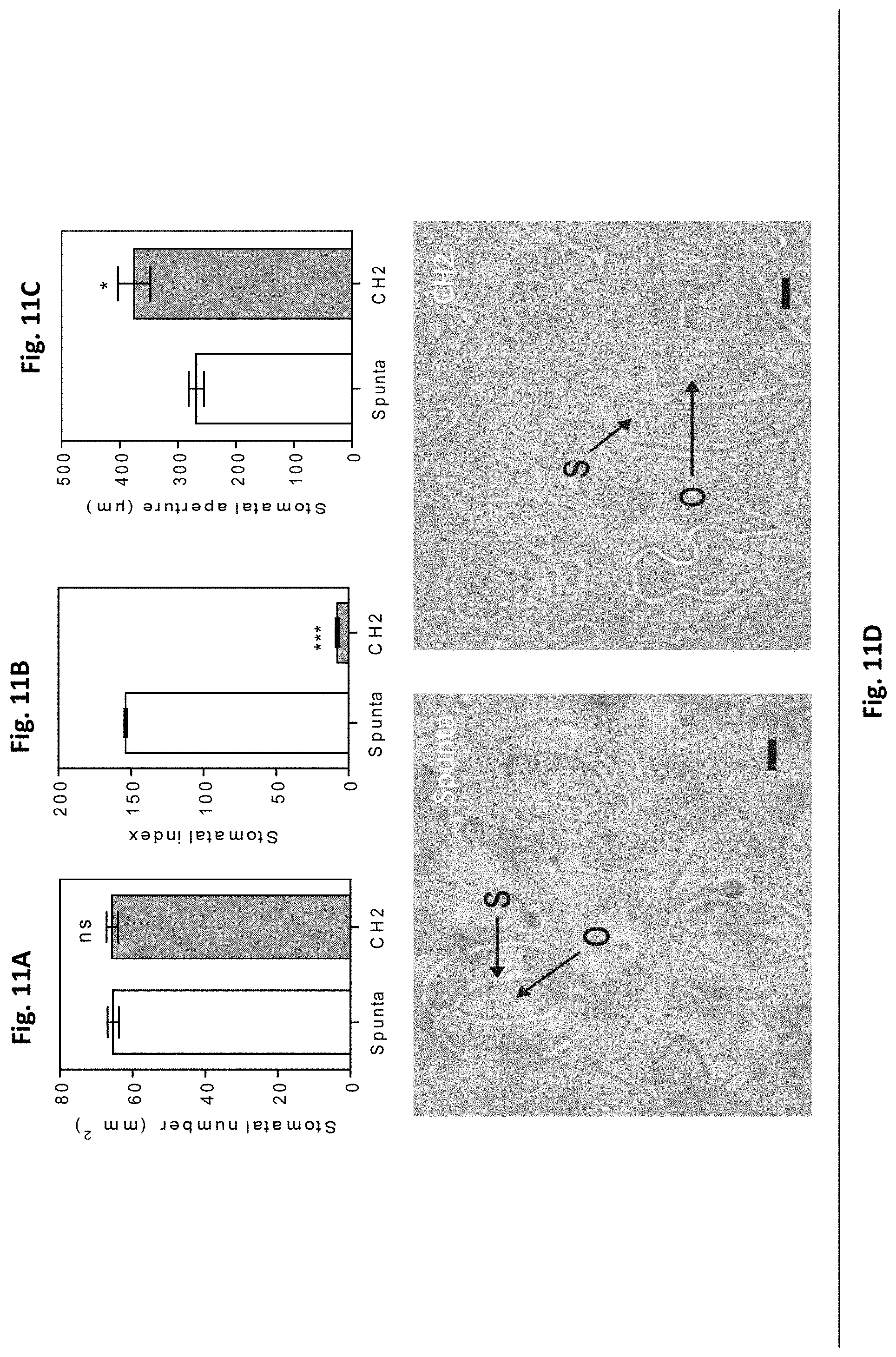
D00011
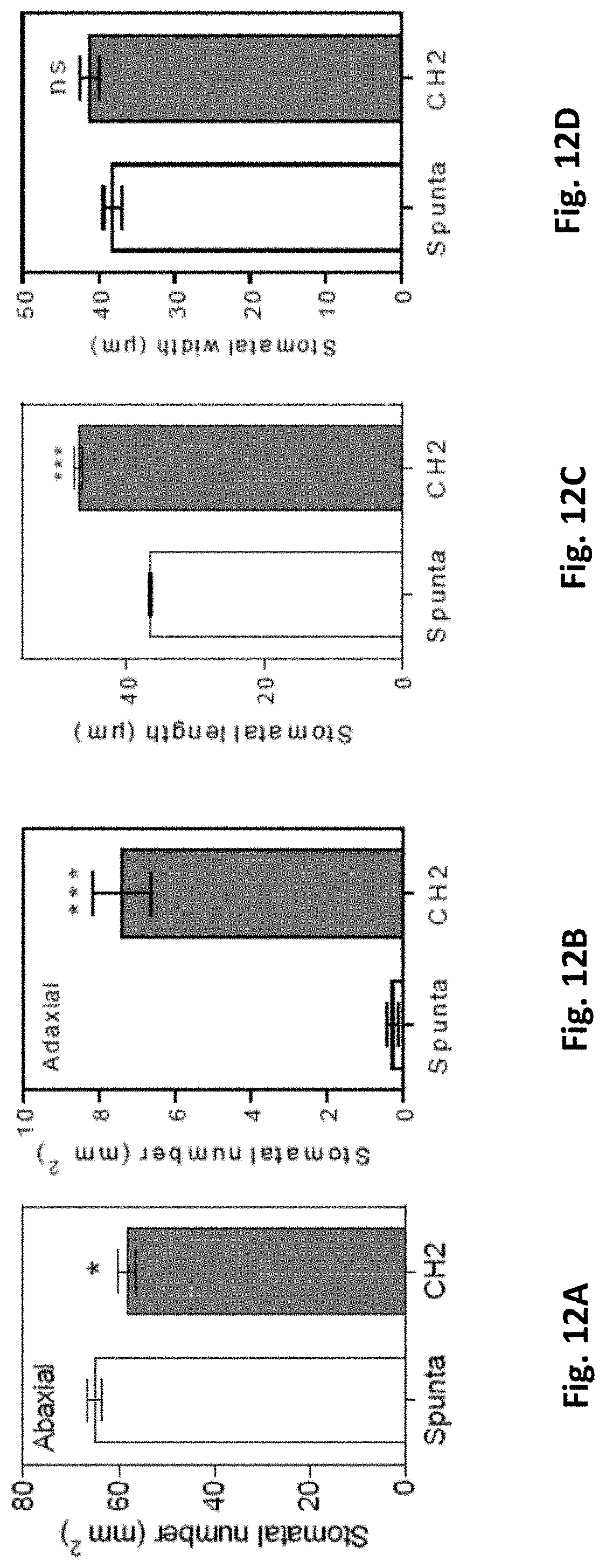
D00012
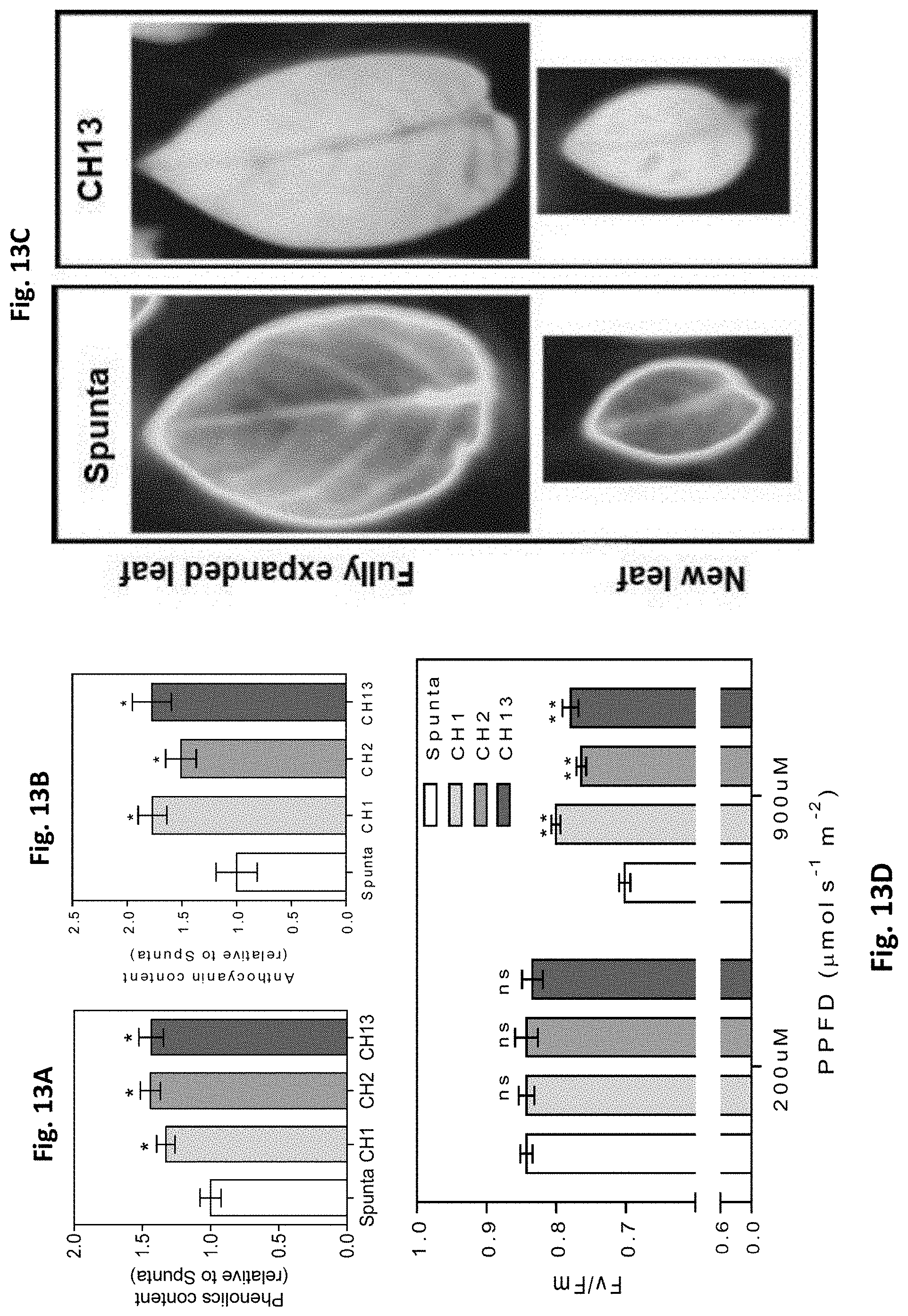
D00013
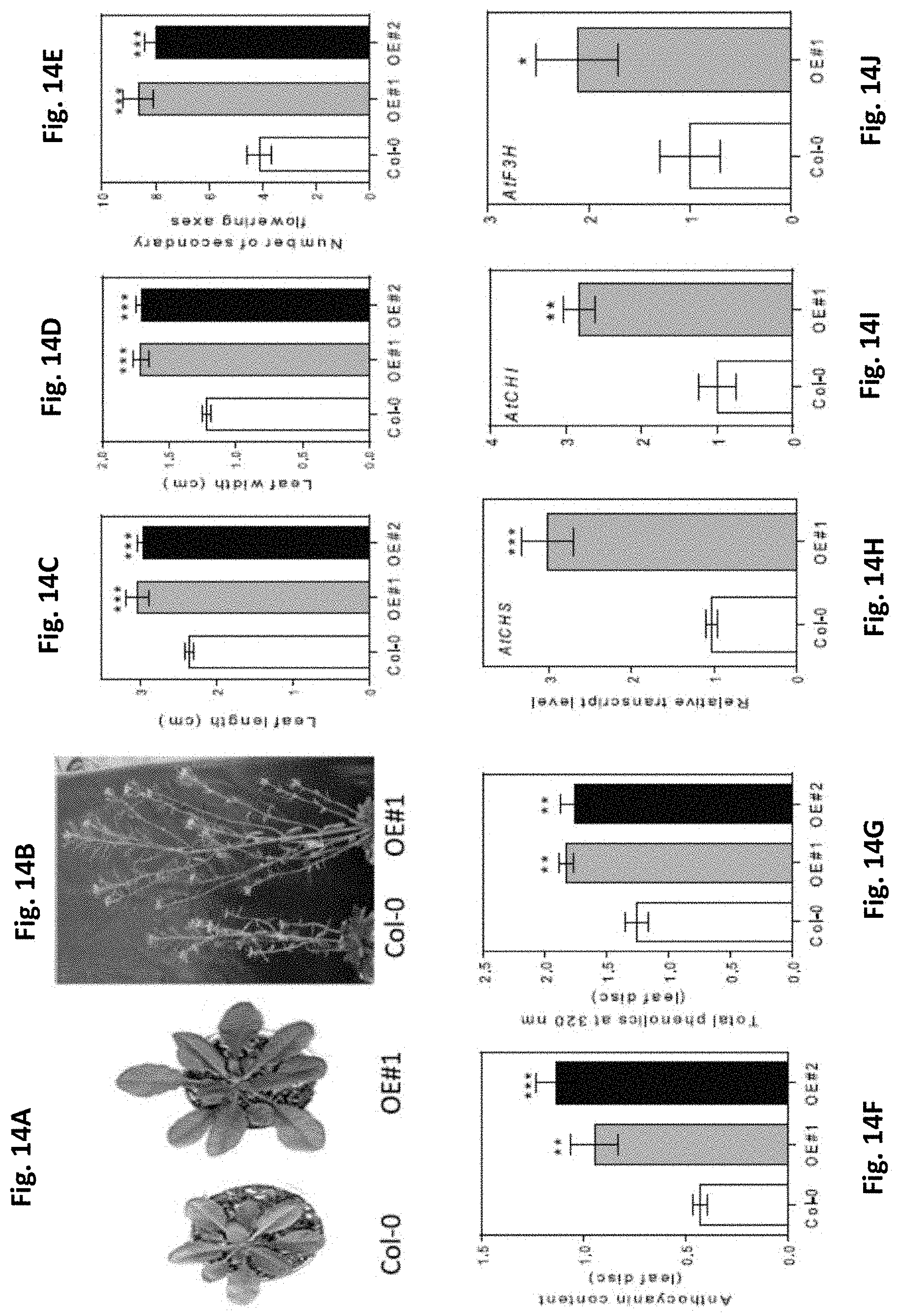
D00014
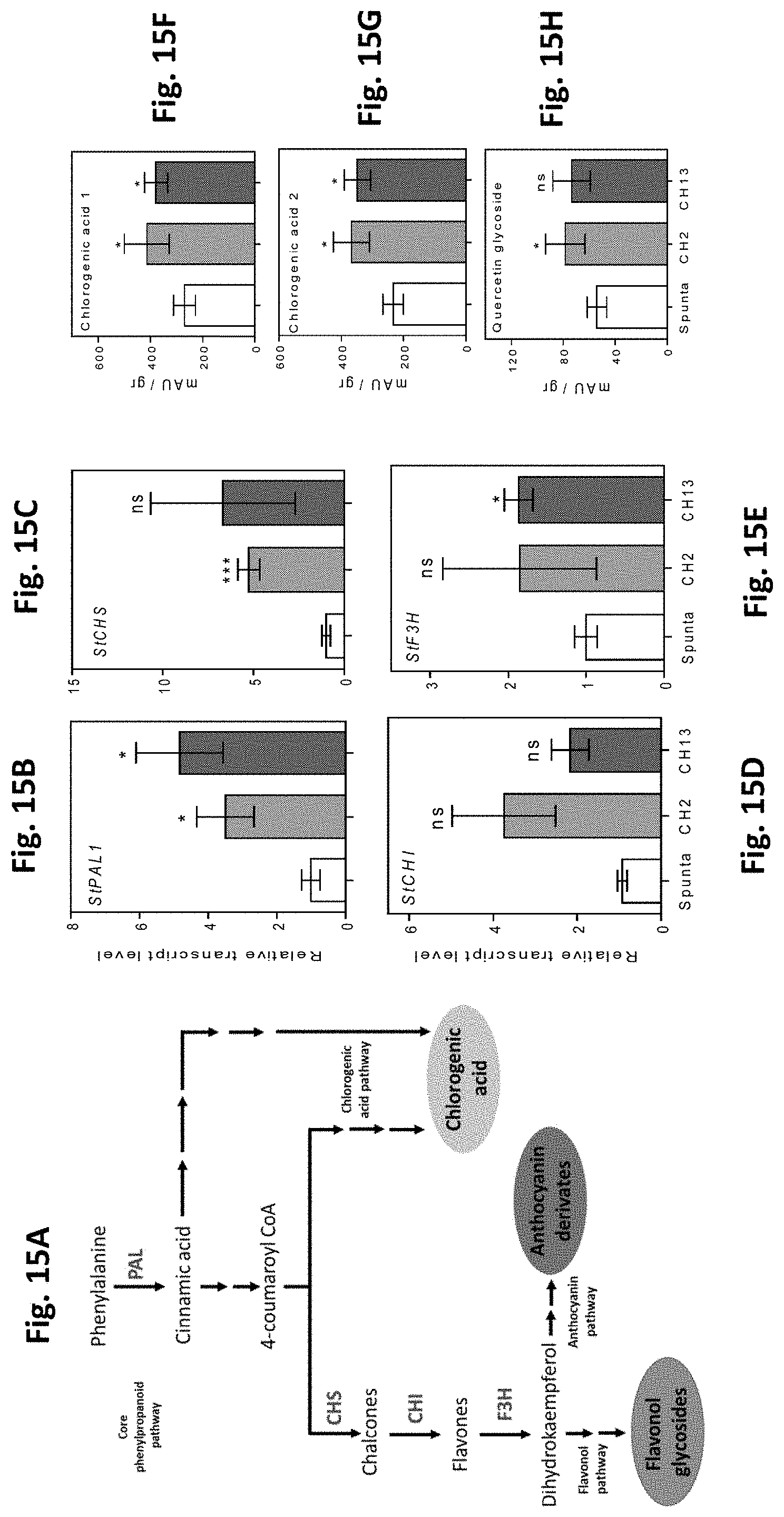
D00015
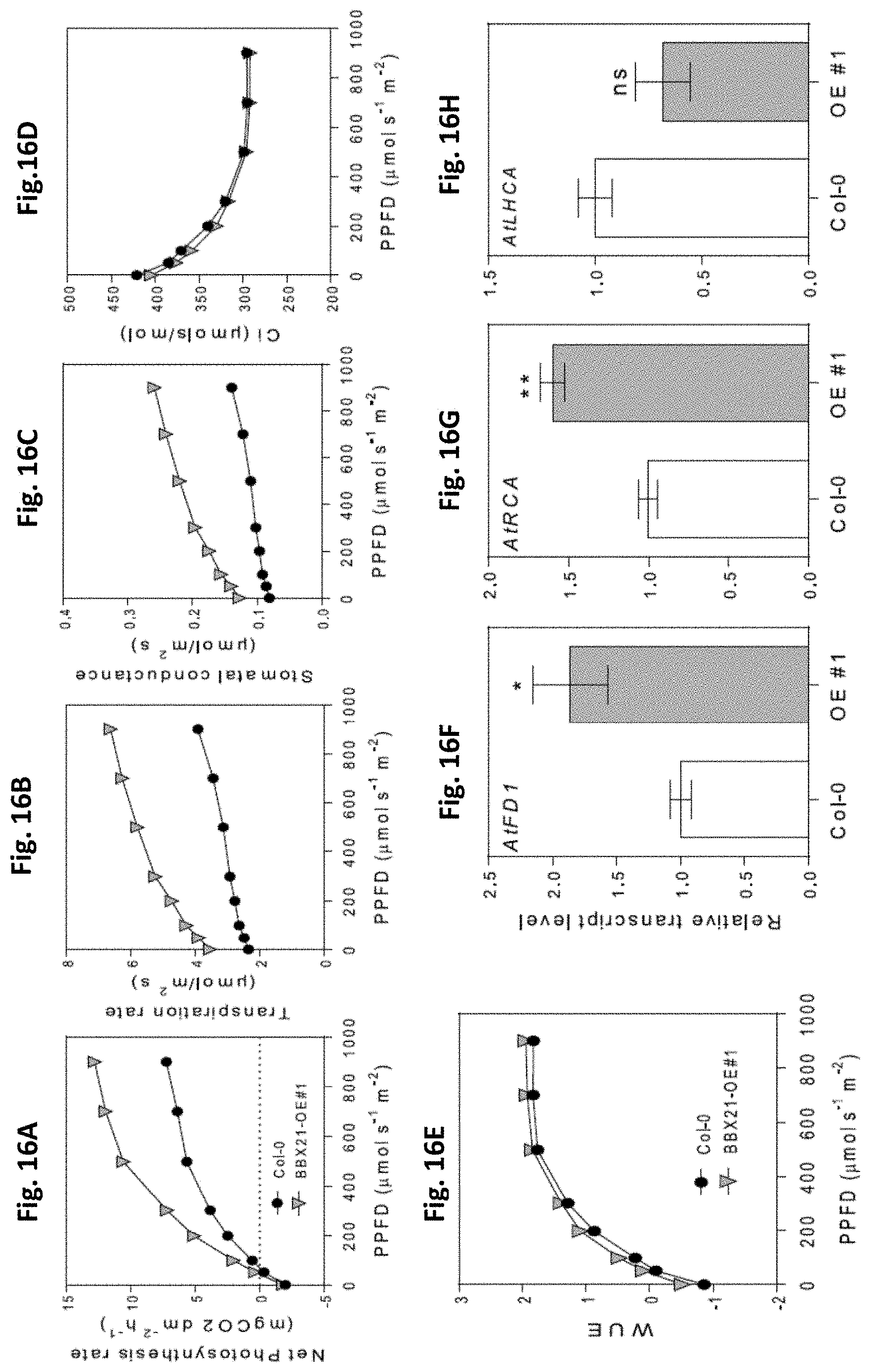
D00016
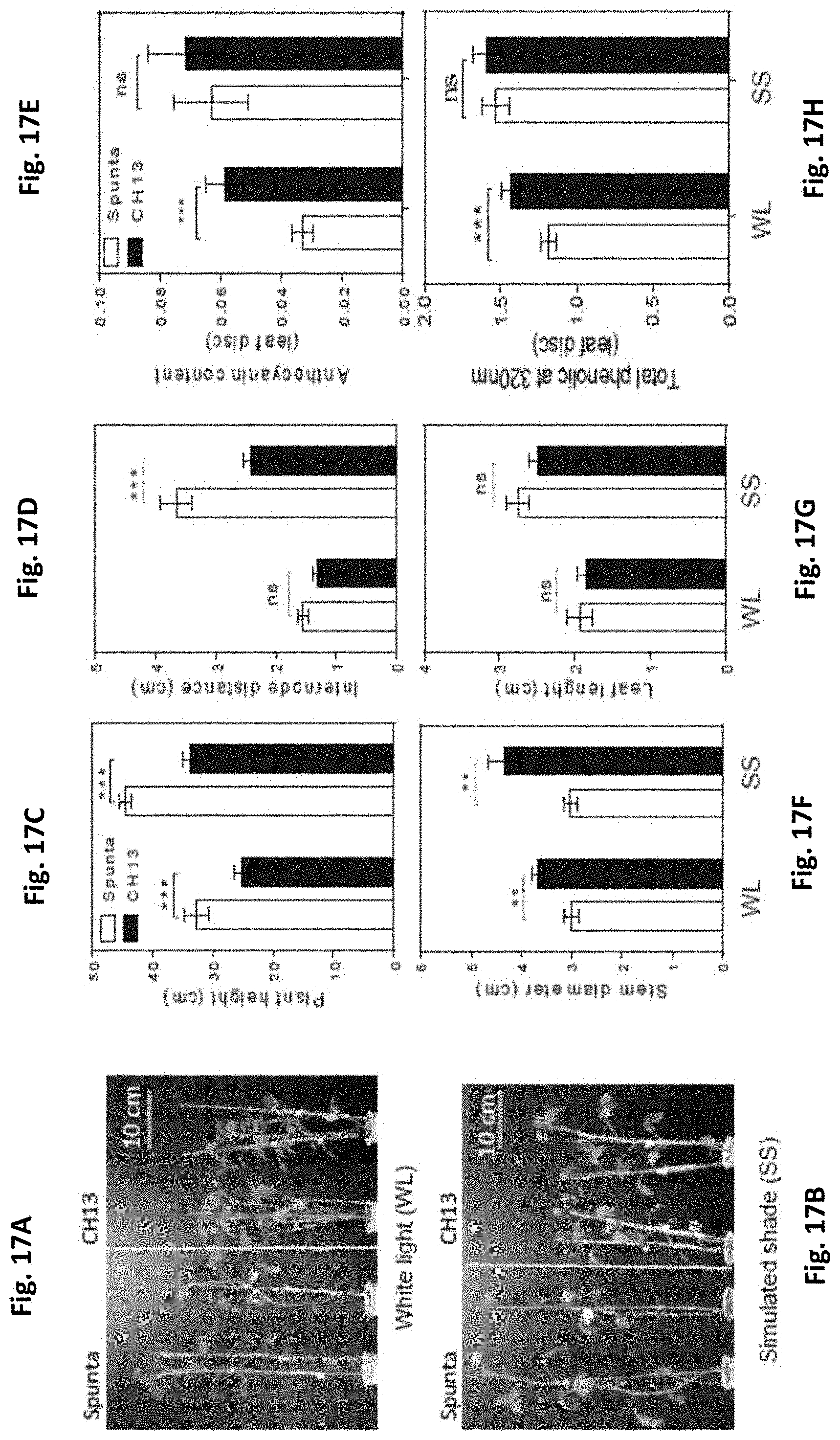
D00017
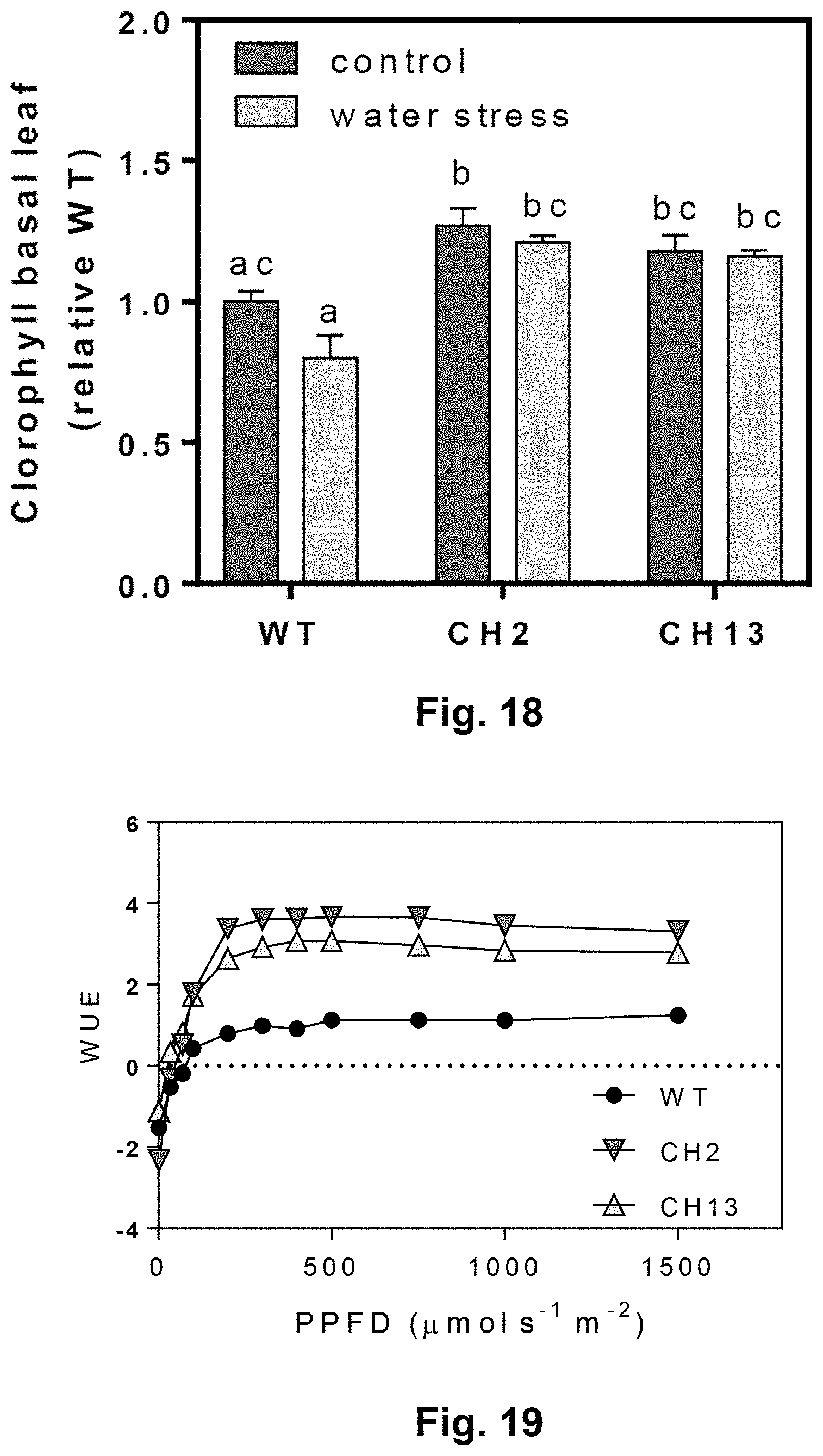
D00018
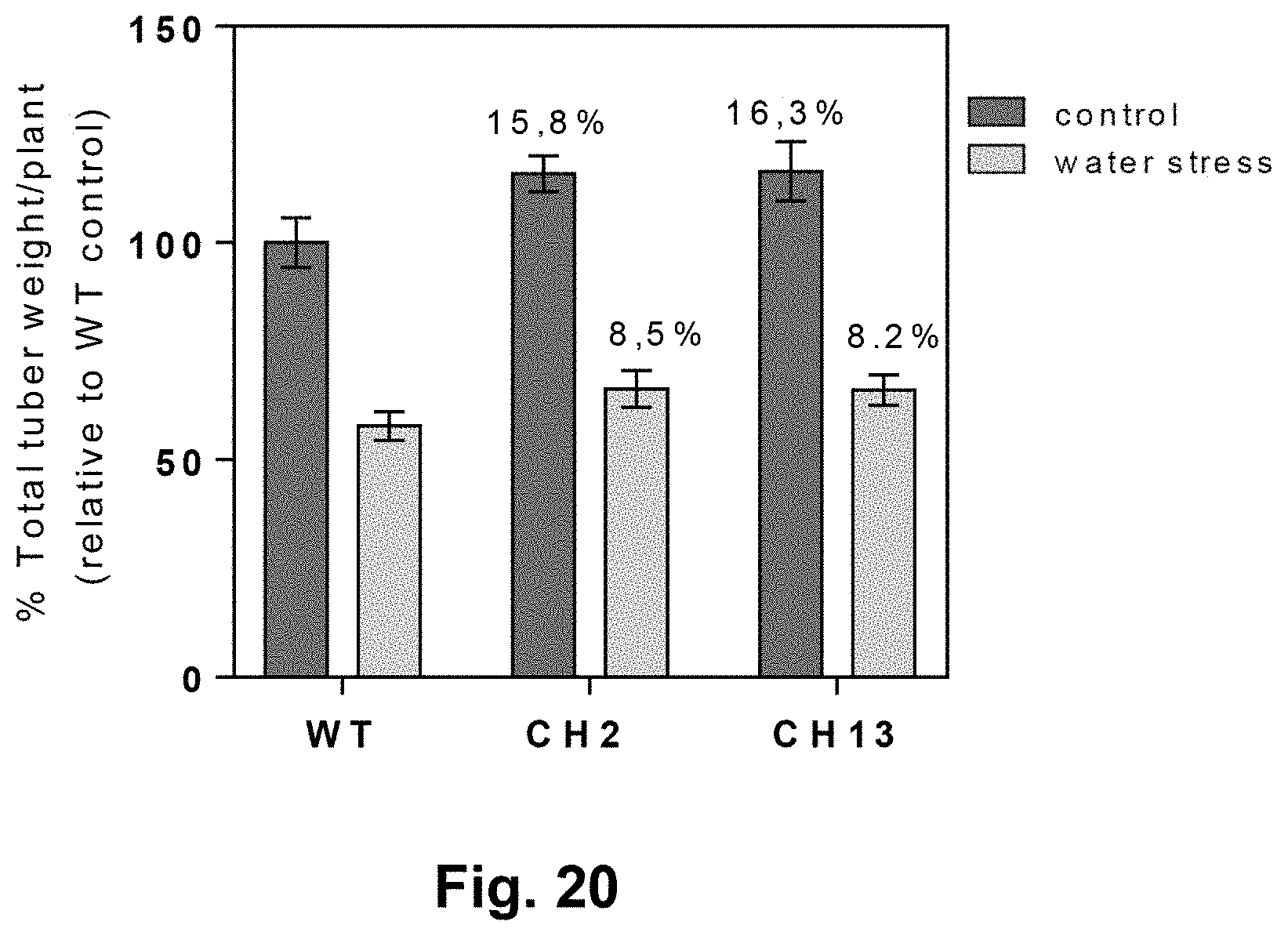
S00001
XML
uspto.report is an independent third-party trademark research tool that is not affiliated, endorsed, or sponsored by the United States Patent and Trademark Office (USPTO) or any other governmental organization. The information provided by uspto.report is based on publicly available data at the time of writing and is intended for informational purposes only.
While we strive to provide accurate and up-to-date information, we do not guarantee the accuracy, completeness, reliability, or suitability of the information displayed on this site. The use of this site is at your own risk. Any reliance you place on such information is therefore strictly at your own risk.
All official trademark data, including owner information, should be verified by visiting the official USPTO website at www.uspto.gov. This site is not intended to replace professional legal advice and should not be used as a substitute for consulting with a legal professional who is knowledgeable about trademark law.